Myself and Johan have just returned from our Incredible India trip, which has been a trip in the making for the past couple of years and been postponed a few times due to the pandemic. India has always been on my mind as a destination that I would love to visit, and having been there, I don't even know where to begin with this trip report.
Having guided in a number of different destinations, I can honestly say that visiting India, experiencing four different parks and seeing the local culture is like nothing I have ever experienced before. It's a tough destination to describe and to put into words, but I am going to give it my best shot.
Our main focus for the trip was the wildlife, as I mentioned we visited 4 different National Parks all in the central parts of India - Tadoba National Park, Bench National Park, Kanha National Park and Bandhavgarh National Park. To pick a favorite is simply impossible as they are all different and unique in their own way and thats the exact reason why we chose them. These lodges all fall under Pugdundee Operators and what an incredible setup they have made in each of their camps that we stayed at.
When it comes to the camps, all the camps you either stay on the edge of the buffer zone or just outside (normally never more than 20 minutes to the gate). So what is a buffer zone? The buffer zone is a piece of land that surround the entire National Park and acts as a fence line, allowing animals to move freely and stay away from the local communities and for the most part this buffer zone works really well. The only issue, which most wild areas are struggling with is human and animal conflict, especially humans encroaching into wilderness areas leaving less and less space available for the wildlife. Quick fact, in the 80's early 90's there was roughly 2000 tigers left in India, now, there are roughly 4000 tigers across India, this count is done only on breeding adults. As great as this is to see a rise in tiger numbers, the situation needs to be monitored closely so that they can spread out and that their numbers can continue to increase and one of the many ways in which us humans can help is by visiting these beautiful parks and supporting the conservation efforts.
Our first stop on the trip was Waghoba Eco Lodge, Tadoba National Park
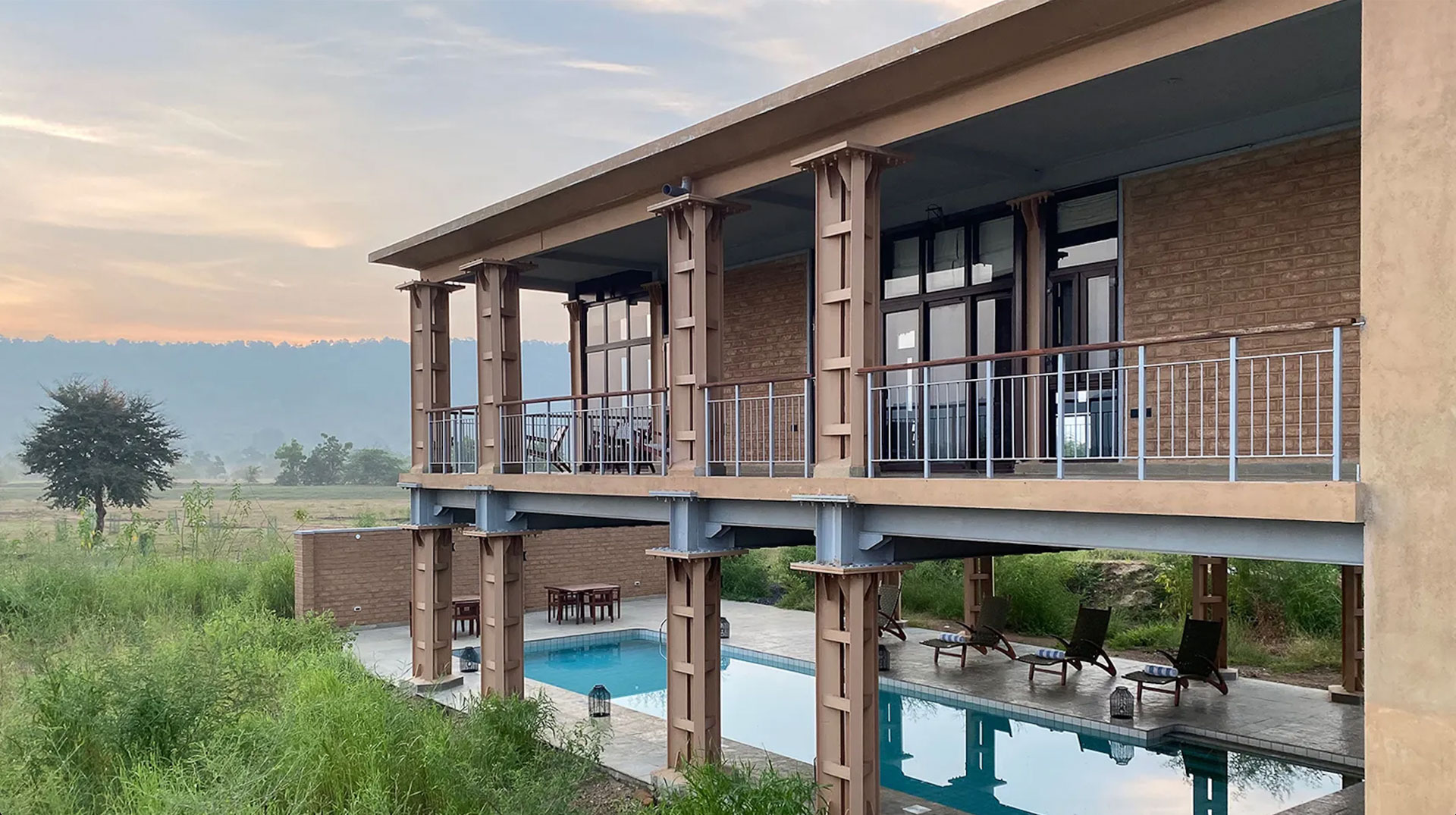
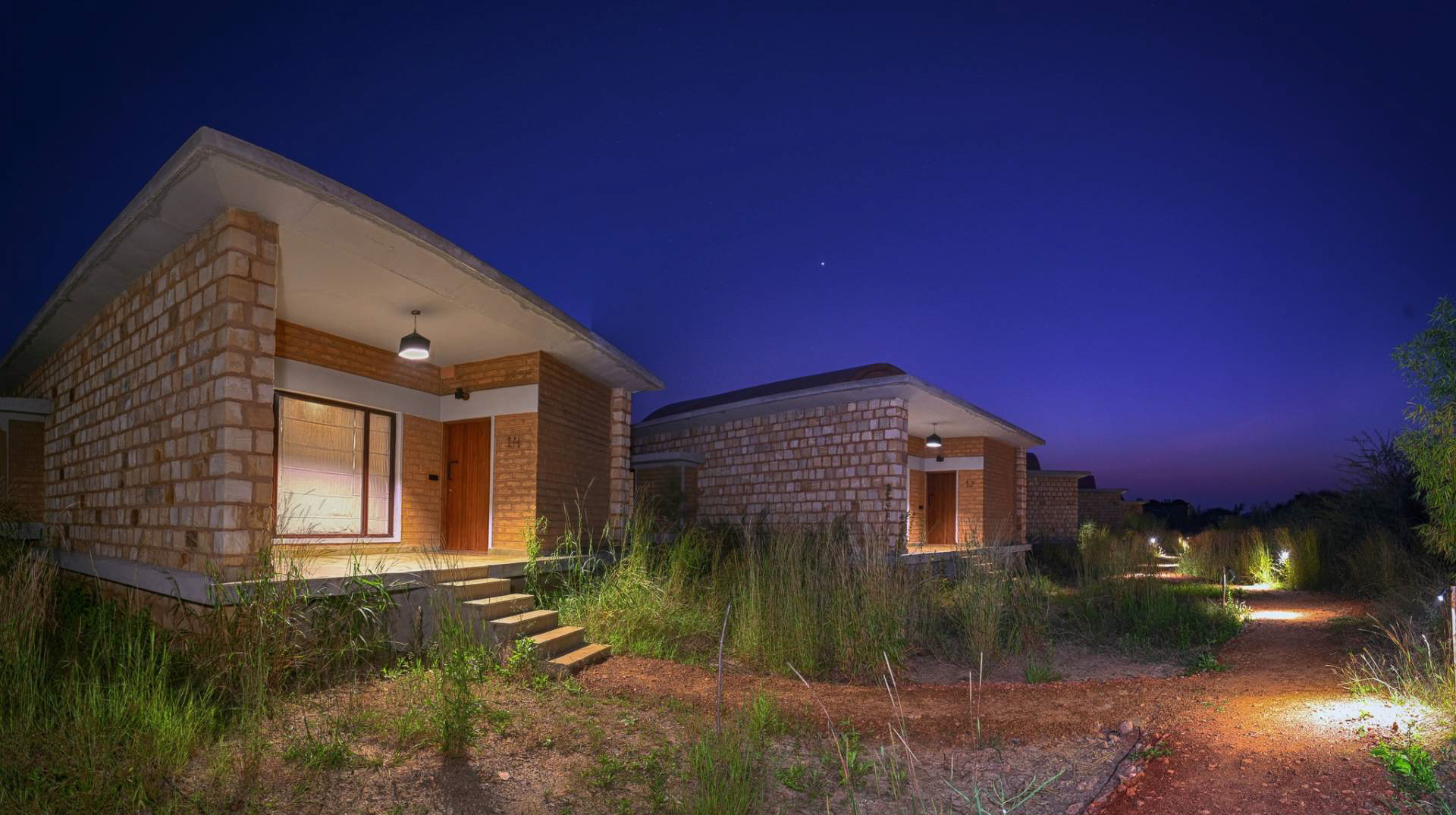
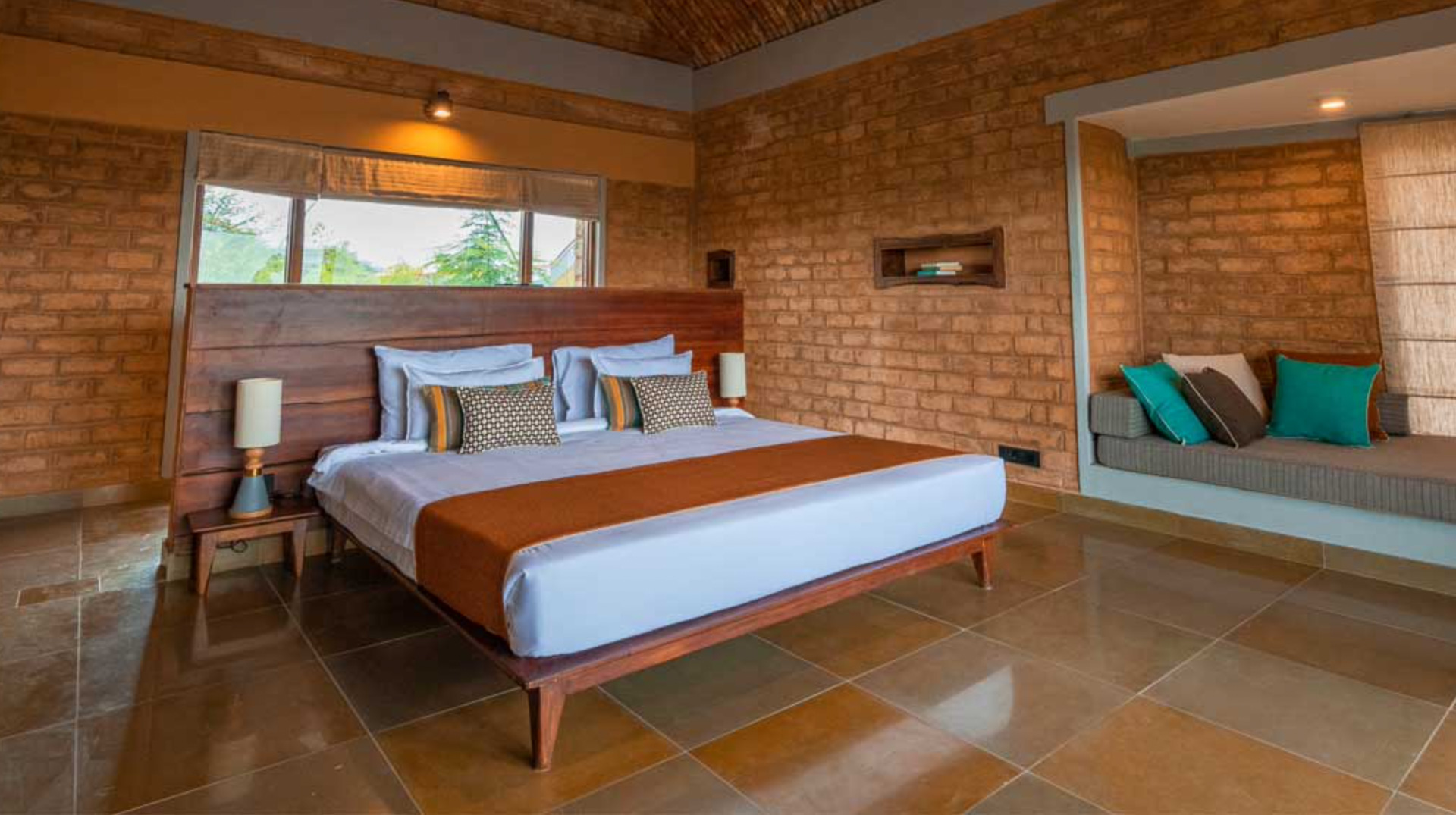
The lodge itself is situated inside the buffer zone of Tadoba National Park and is about a 15 minute drive to the gate.
The lodge is the newest lodge under the Pugdundee name and was due to be completed in 2020, but due to the Pandemic, it was finished in 2021. “Waghoba” is a combination of two Marathi words: “wagh” that stands for tiger and “ba”which is used as a word of respect.
Waghoba Eco Lodge was the perfect place to begin this trip, just a short flight from New Delhi into Nagpur then a couple of hours drive to the lodge and before we knew it, we were out on safari and exploring the forests of India.
Tadoba National Park is one of 47 tiger reserves in India, and the oldest and largest in Chandrapur district of Maharashtra. The total area of the tiger reserve is 1,727 square kilometers, which includes the Tadoba National Park, created in the year 1955. The word 'Tadoba' is named after God "Tadoba" or "Taru," revered by local tribal people of this region. It is a tropical dry deciduous forest with teak as the prominent tree species. It is known for sightings of tigers, sloth bears and Indian wild dogs.
We were fortunate enough to see 3 different tigers on our very first drive! The park itself is absolutely beautiful with bamboo thickets and ghost trees, it makes for the perfect habitat for the diversity of game in the area.
With so many water sources in the area, we would often drive back and fourth between waterholes, it may seem a little pointless, but in the heat of the day, the waterholes are extremely active with general game and tigers. The tigers use the water sources to hunt, to drink and during the hotter months, to cool their bodies down. So by circling back and fourth, it gives you the best chance of finding animals.
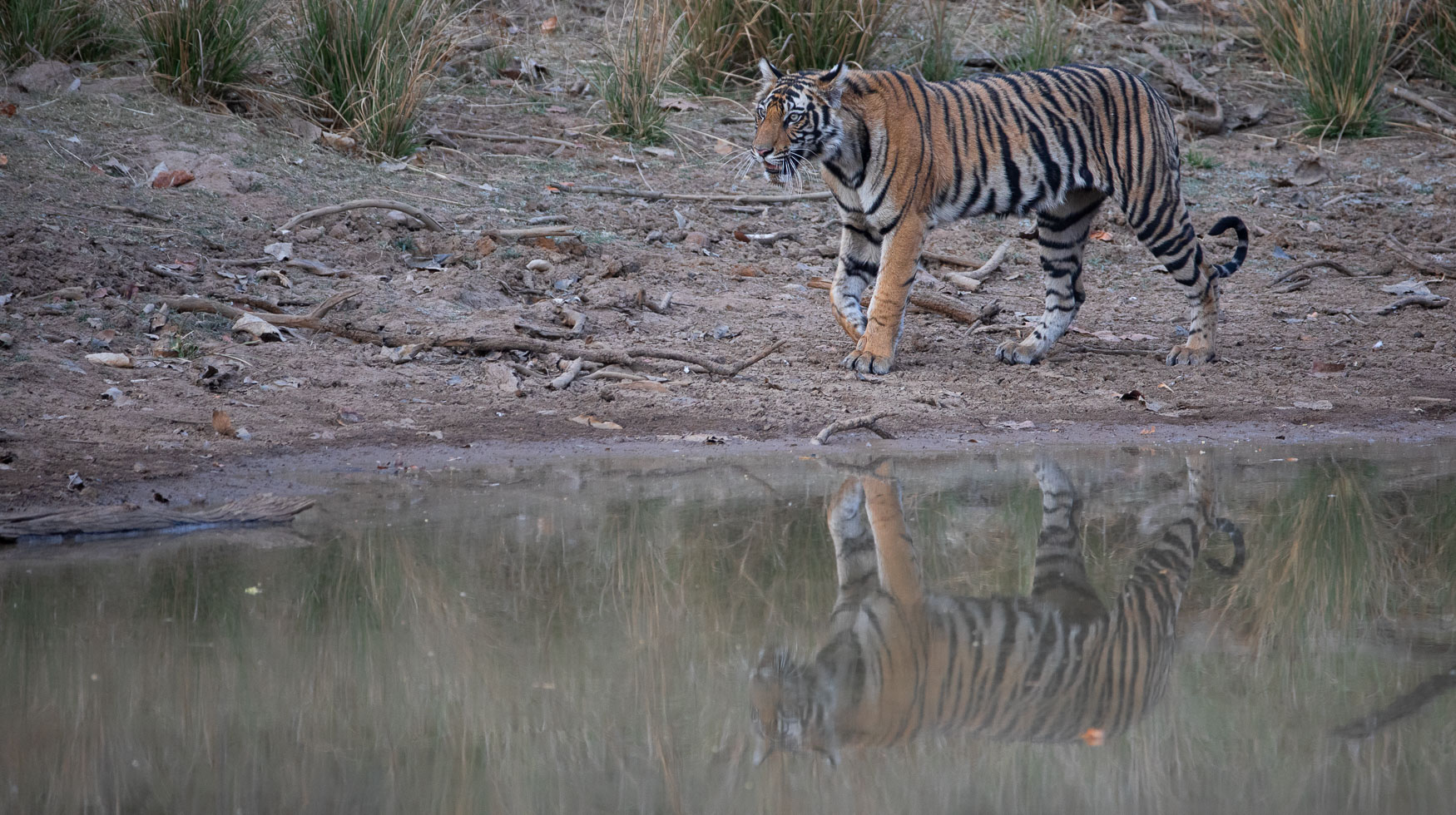
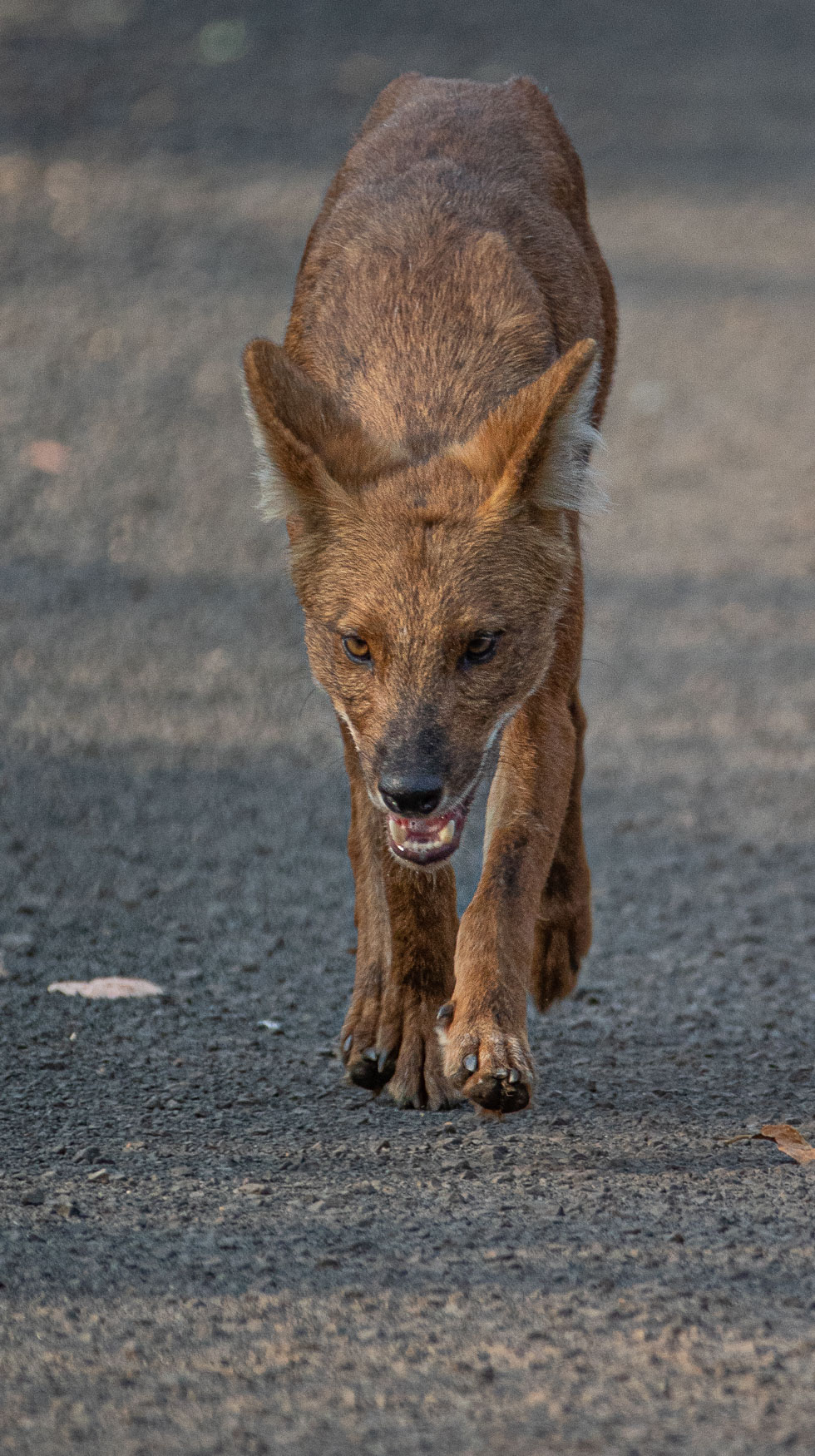
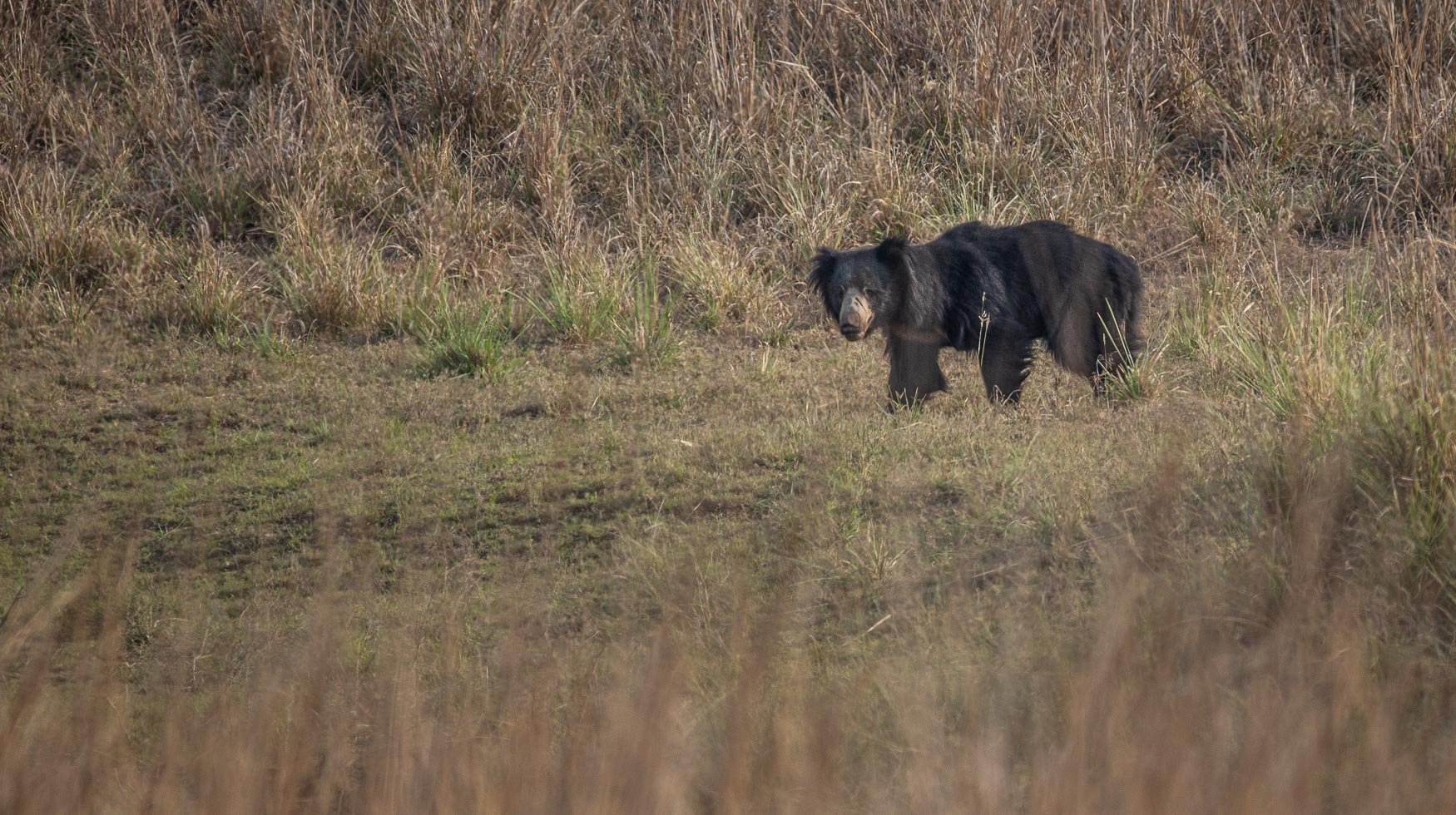
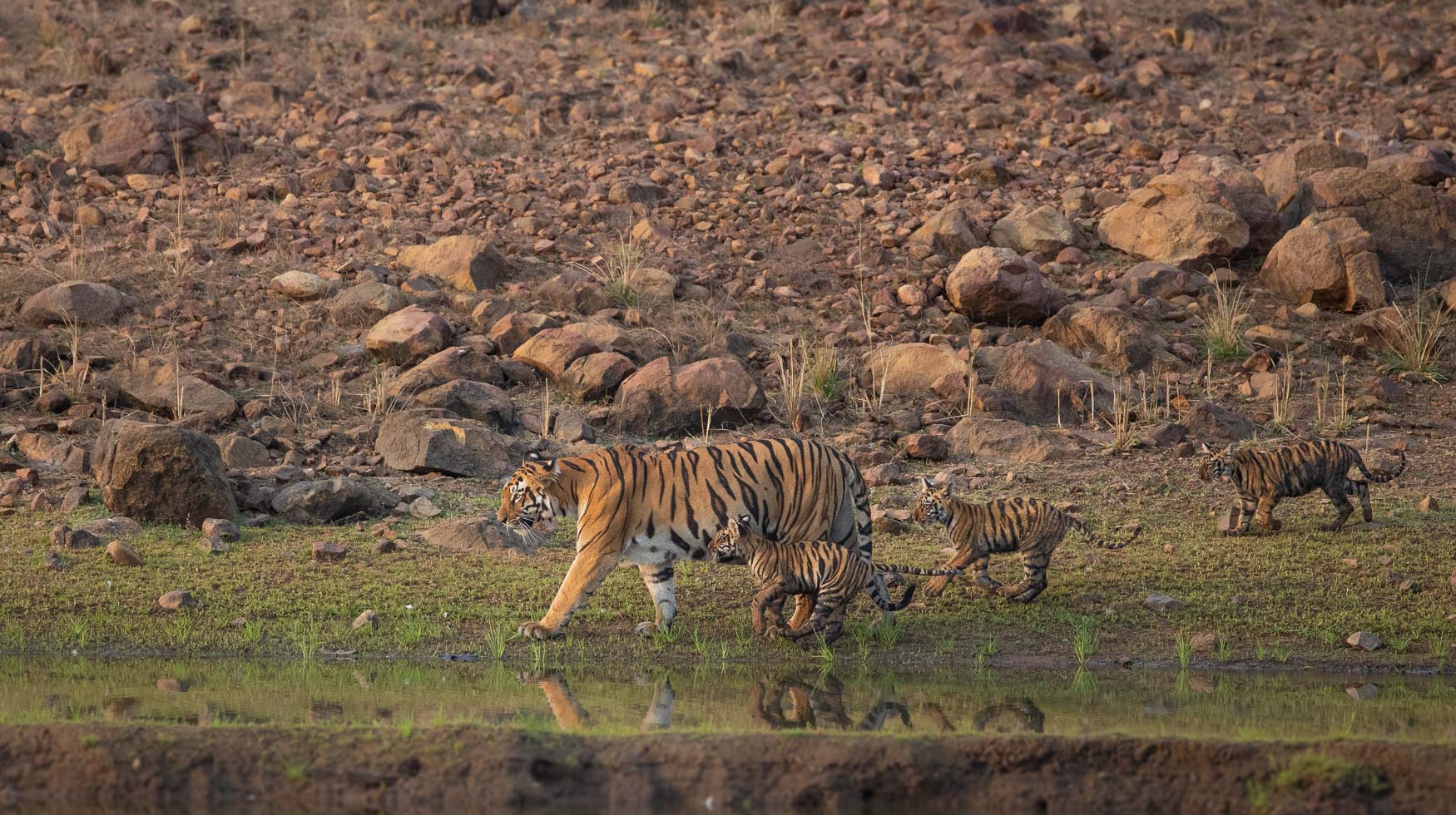
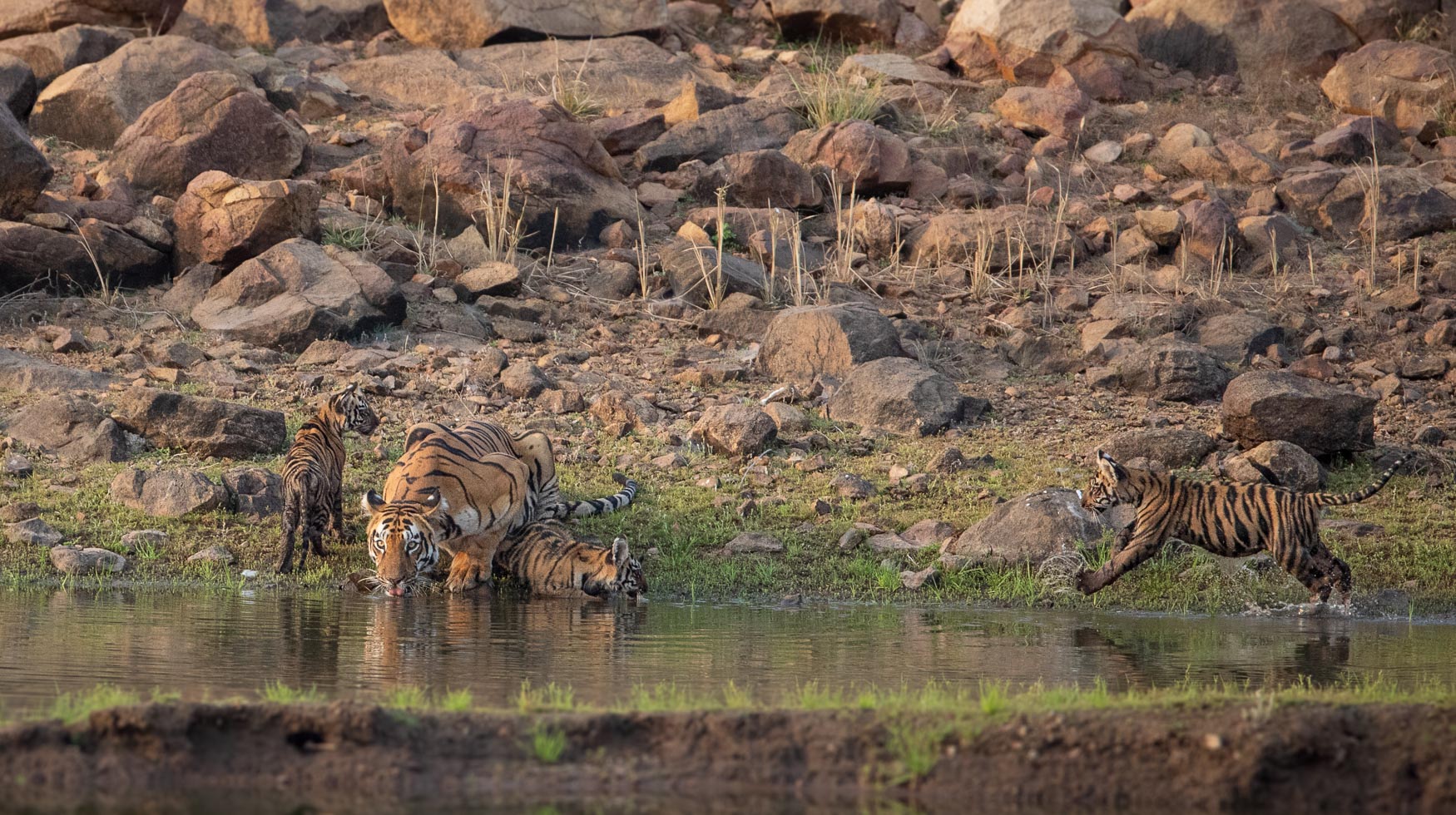
Getting there
After about an hour and a half flight from New Delhi to Nagpur, it's approximately a two hour drive to Tadoba. Along the way you get to experience some of the local villages and towns.
Our second stop for the trip was Pench Tree Lodge.
The famous Jungle Book character Mowgli was a wolf befriending boy from the tribal village of Pench.
Pench Tree Lodge is an absolutely beautiful lodge to stay in, with 6 different tree houses and 6 different cottages, which cater for your every need. The lodge is situated on the boundary of Pench National Park. The park was established in 1975 with an area of 257.26 kilometers squared and was later made into a tiger reserve in 1992.
Driving through the park, it is clear how vast and beautiful this forest is. Dwarfed by beautiful huge soul trees and an abundance of general game such as langur monkeys, variety of deer, wild bores and a whole bunch more. Our focus in Pench was to concentrate on the general game. The area has many roads but the road network is absolutely massive, this means that the blocks or areas that have no roads are huge. Also being dense forest with rocky outcrops once an animal moves off the road and into the forest, then it is gone. As I mentioned with such big blocks of vegetation, it impossible to guess where that animal will come out if it comes out at all. Having said that just like the other parks, the waterholes are crucial in finding animals and often just sitting at a waterhole and patiently waiting gives you some great results.
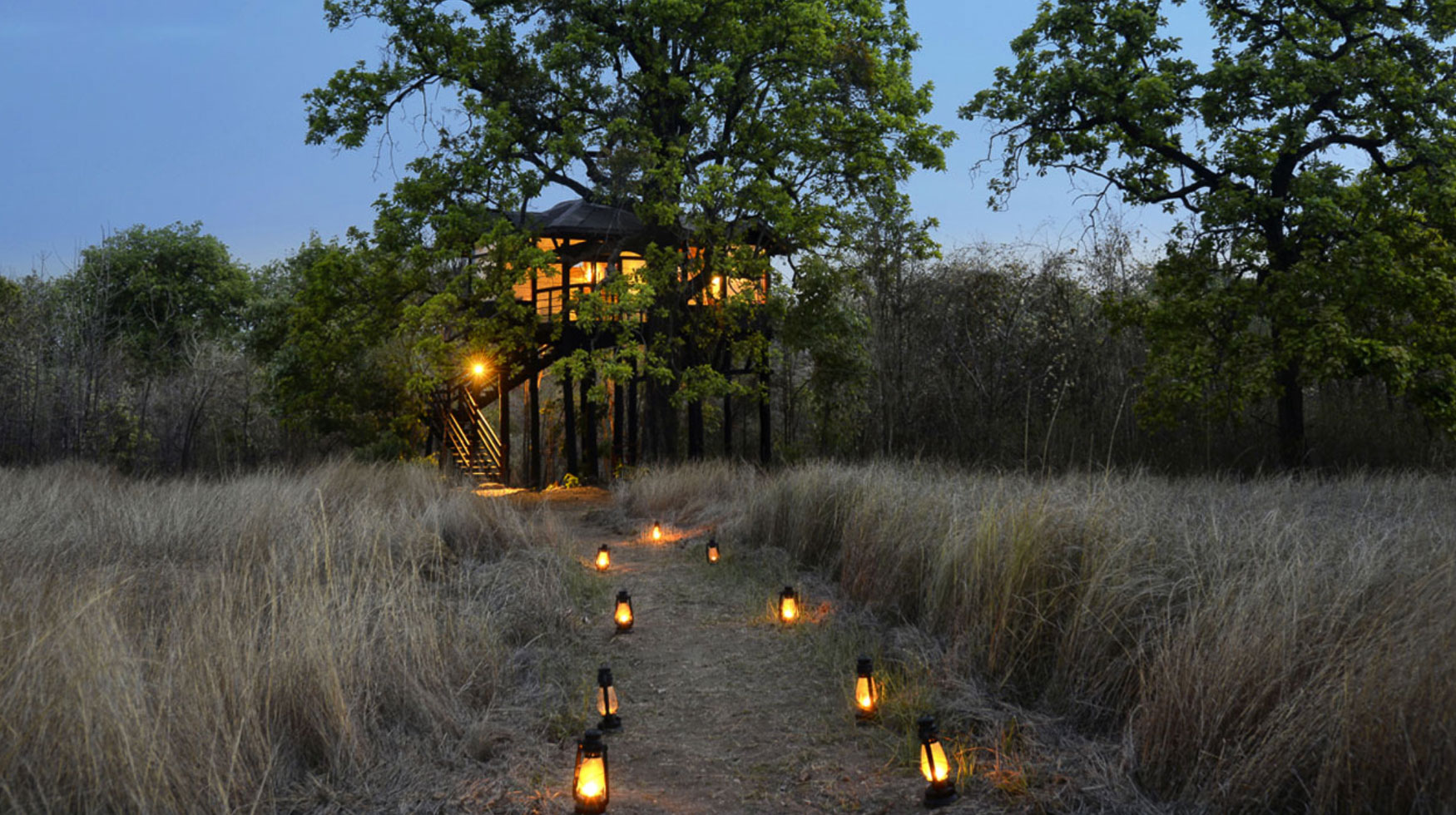
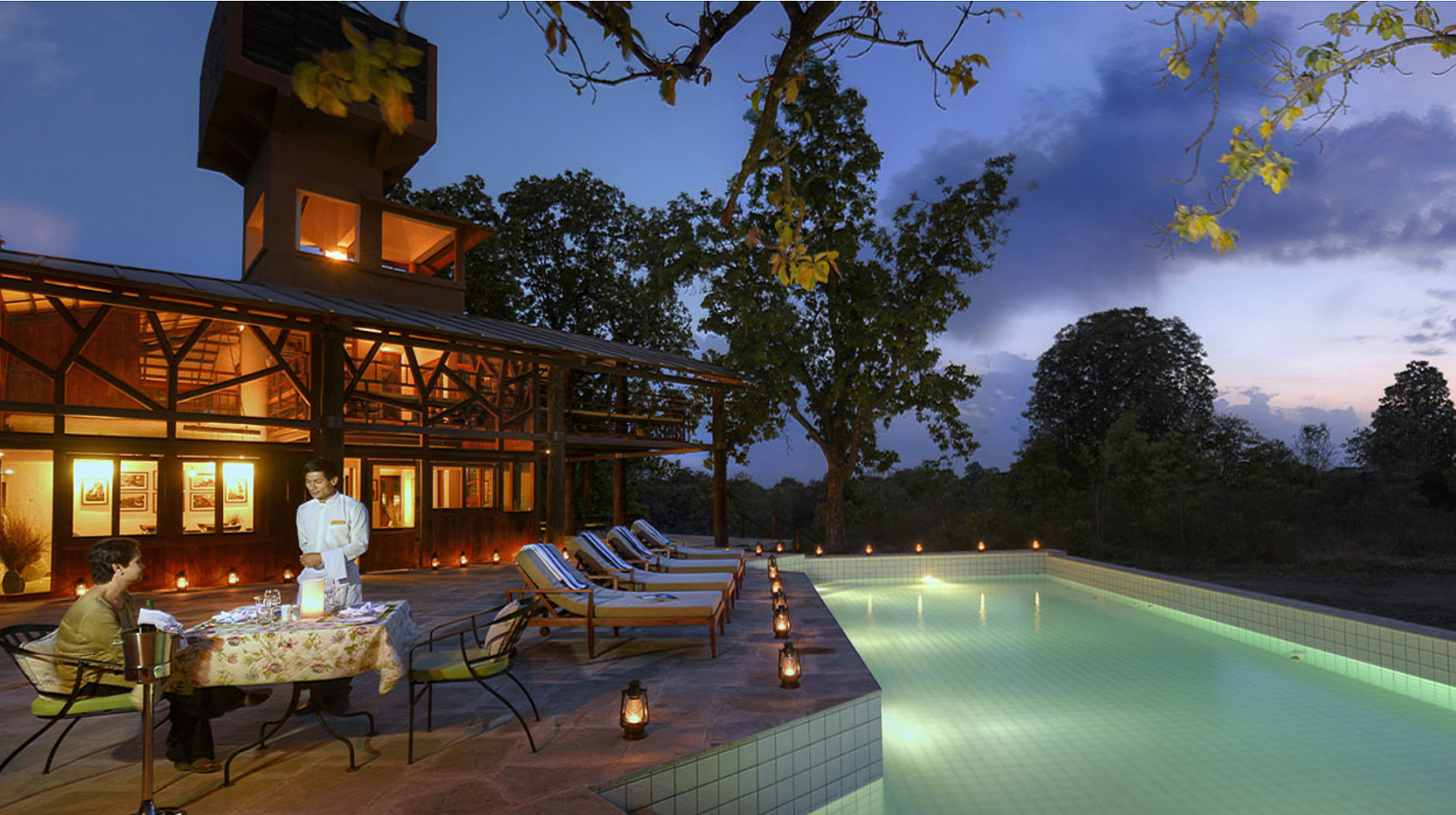
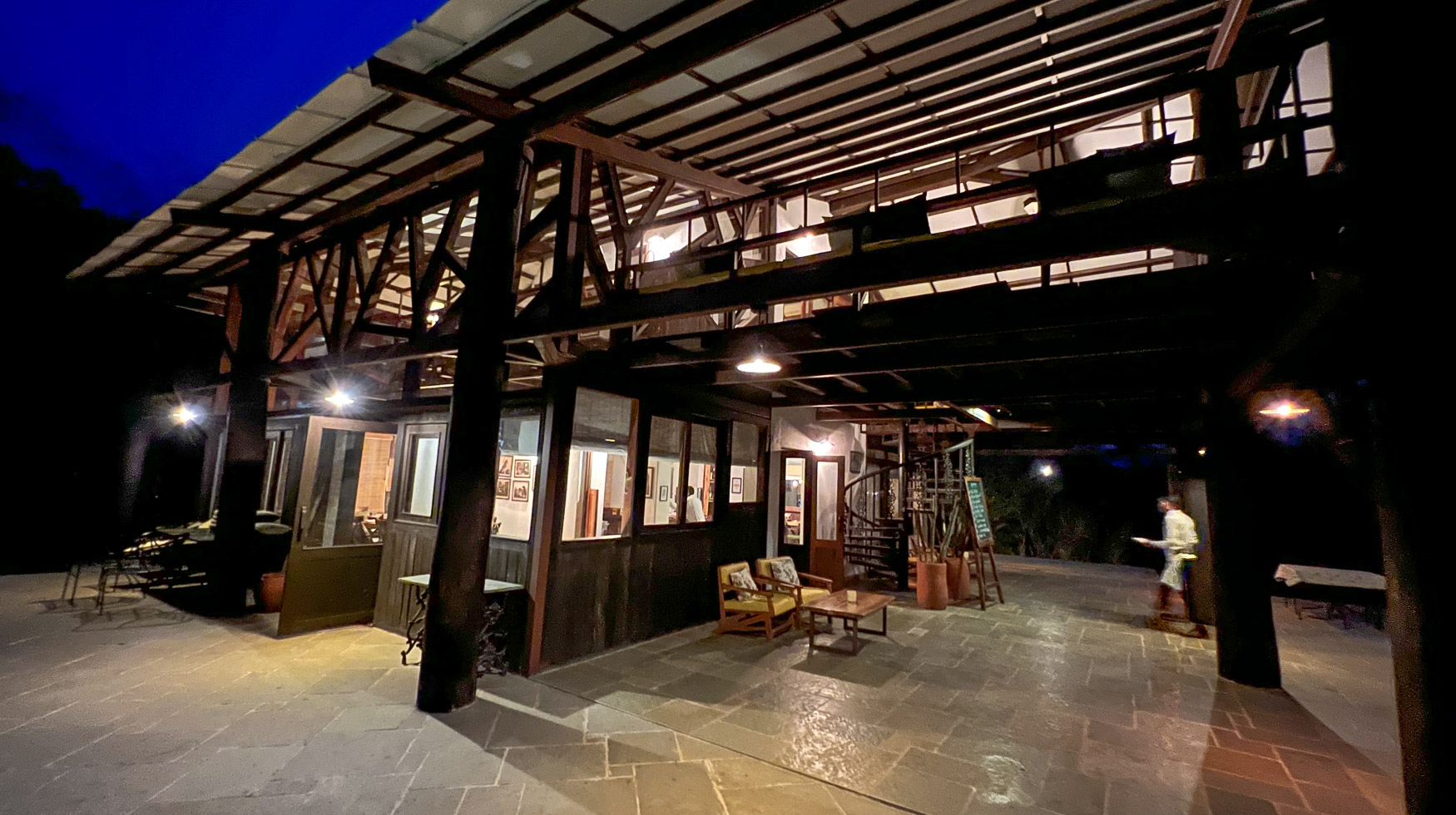
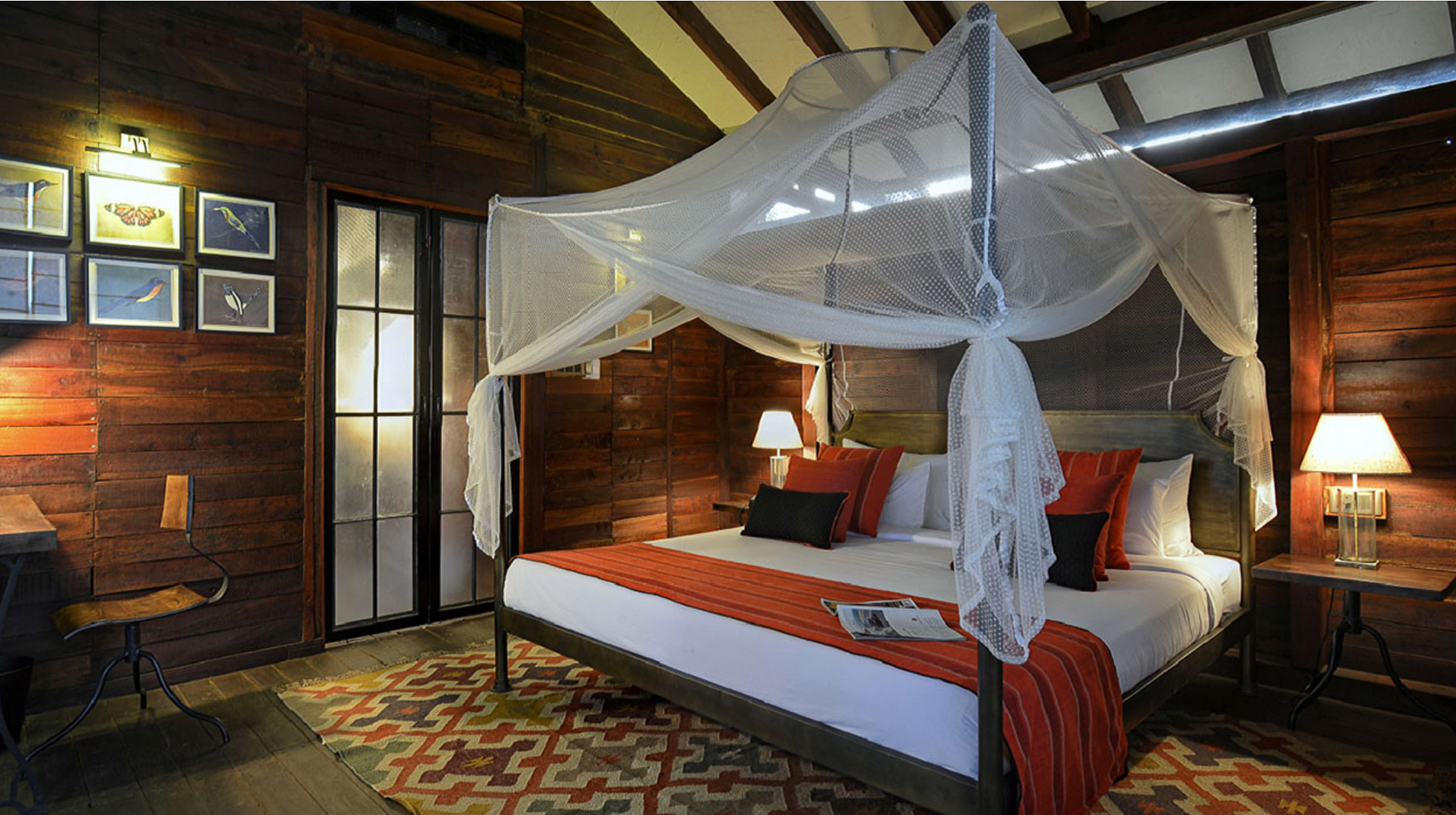
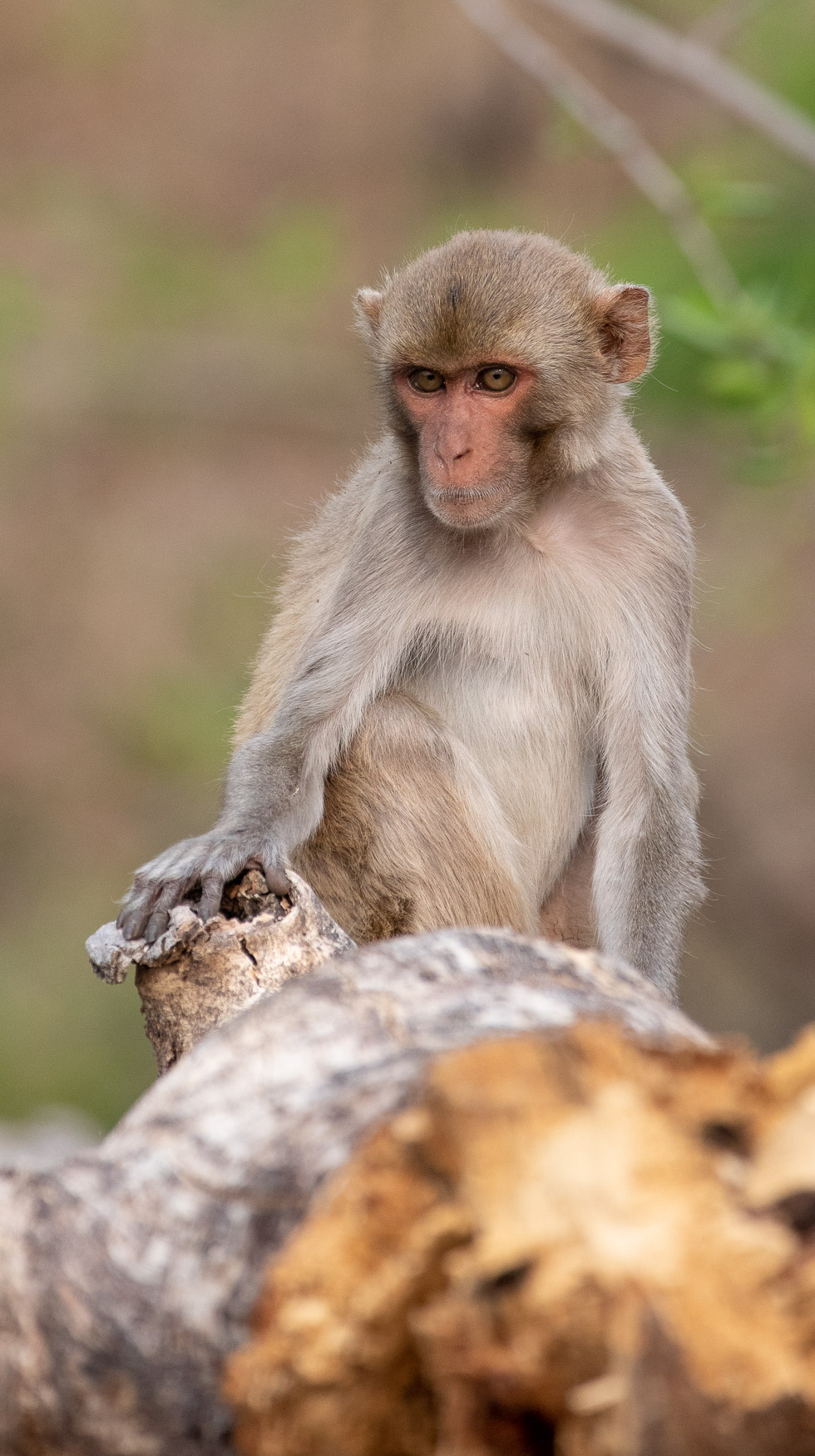
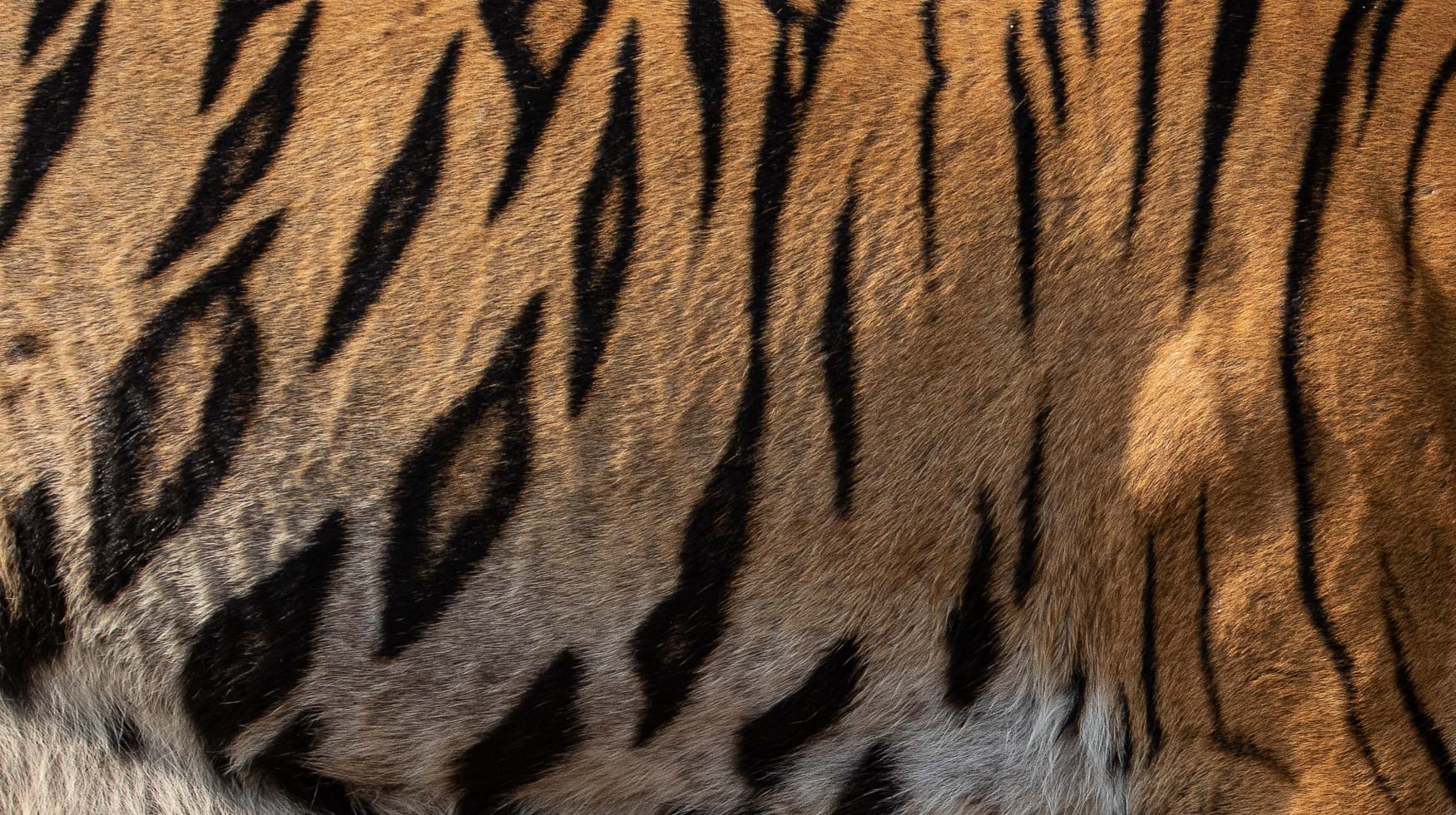
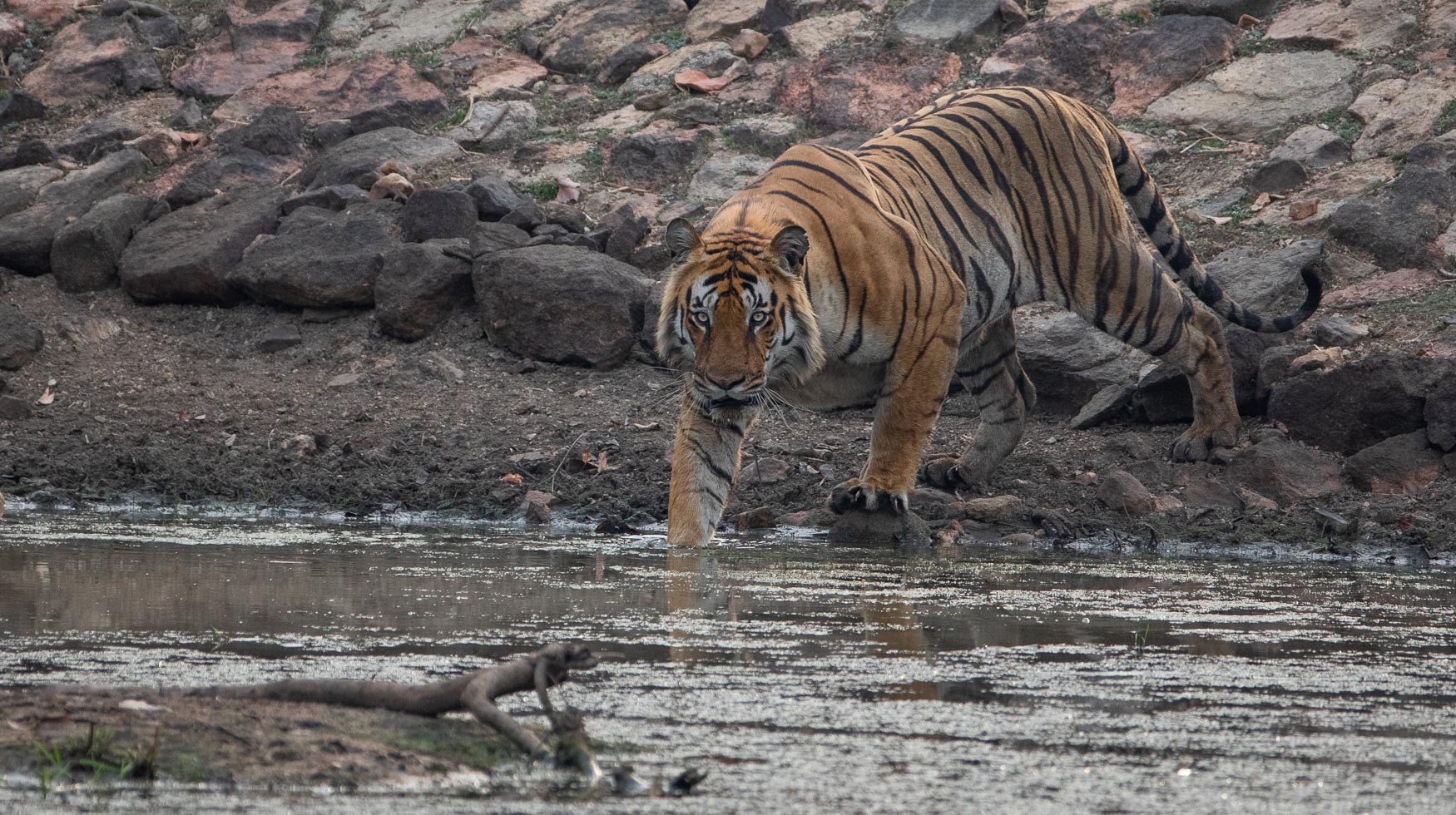
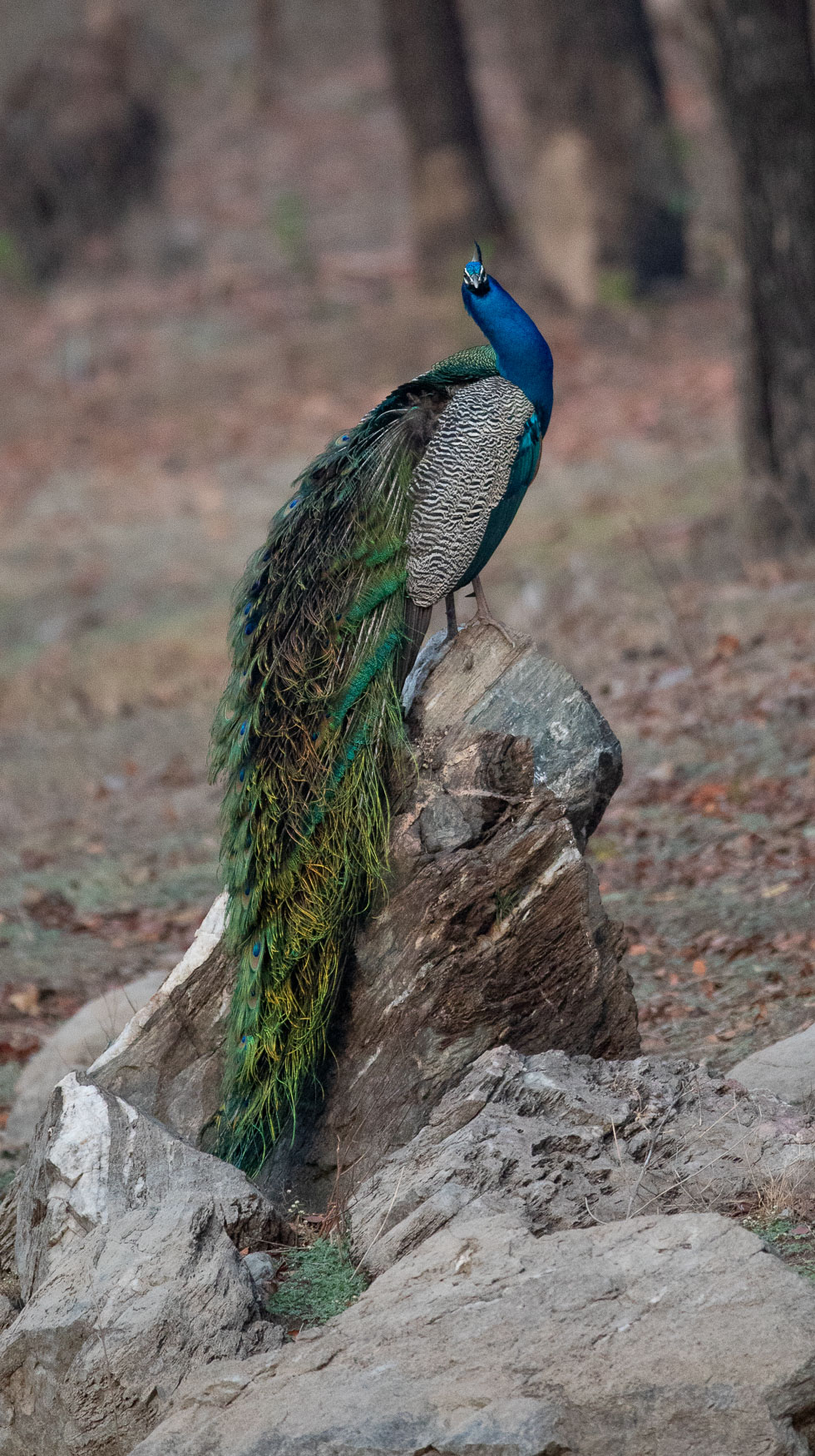
Getting there
Road transfer to Pench National Park (It takes around 5 hours).
The drive initially takes us through the hustle and bustle of the city and then later into the rural areas, before entering the buffer zone bordering Pench National Park.
Kanha Earth Lodge
After and incredible few days at Pench, we made our way to Kanha Earth Lodge, which would be our home for the following 3 days. Kanha National Park was created on 1 June 1955 and was designated a tiger reserve in 1973. Today, it encompasses an area of 940 kilometers squared.
Kanha is situated right on the edge of Kanha National Park on the edge of the buffer zone. The lodge itself is absolutely beautiful, all the lodges for that matter, although they are completely different, they are all really beautiful in their own way.
What makes Kanha so great is that as soon as you enter the lodge you can see the attention to detail that has been put into the lodge. The lodge and rooms have all been built using natural rock from the area and wasted wood.
The lodge for me has a classic jungle feel and although each destination was amazing, Kanha, for me was my favorite lodge.
One thing I wanted to mention was how great it was to see so many of the local people visiting each park and staying at these lodges, because it shows the support towards the lodges but also towards the conservation of the tiger reserves and what was clear was how much the local guides, staff and people we met was how important it is for us to preserve these beautiful natural wilderness areas.
One of its greatest achievement has been the preservation of Hard Ground Swamp Deer or Barasingha from near extinction (they numbered just 66 in 1970). Today, they number more than 400 and are the only surviving population of Barasingha in the wild.
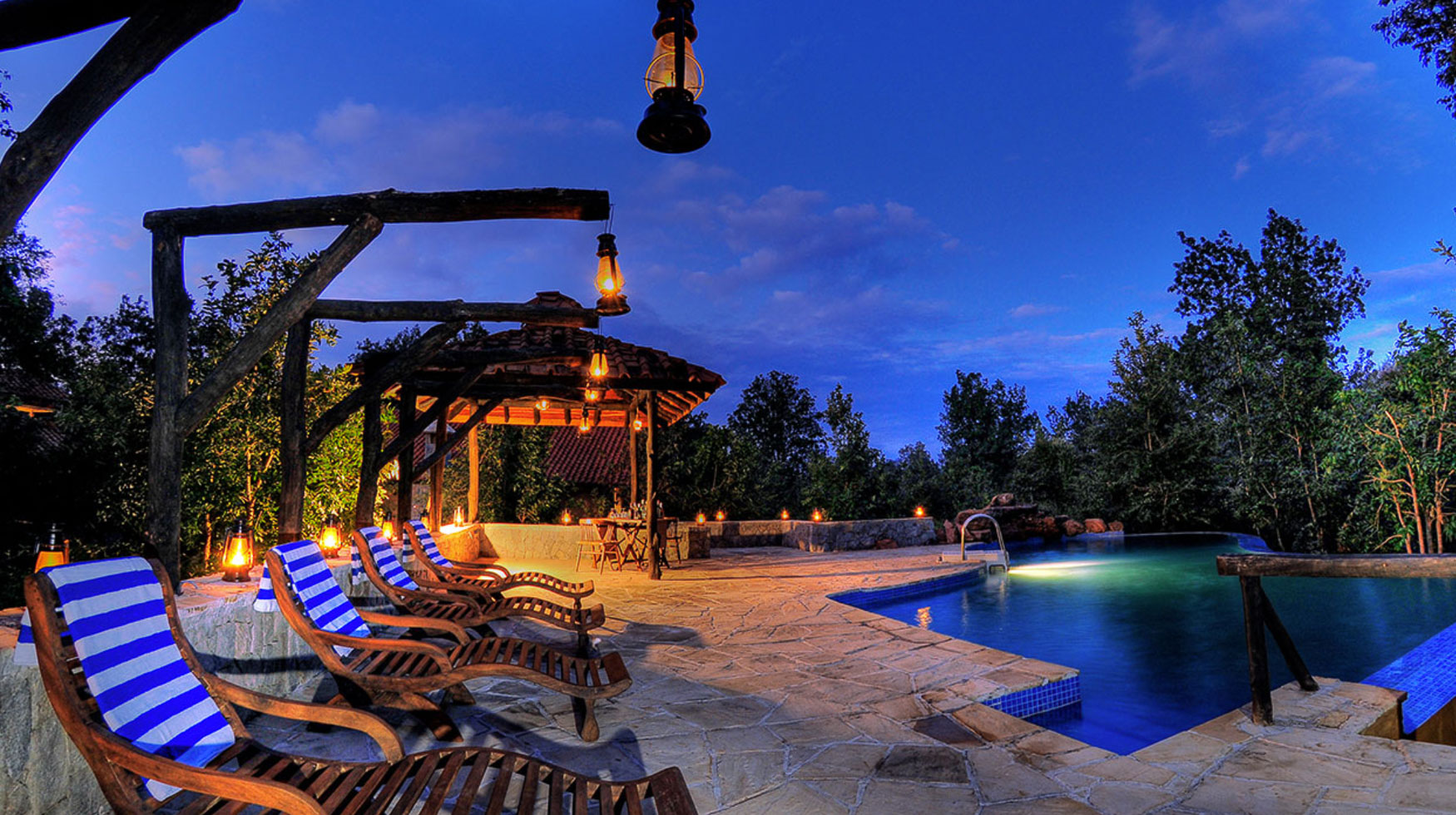
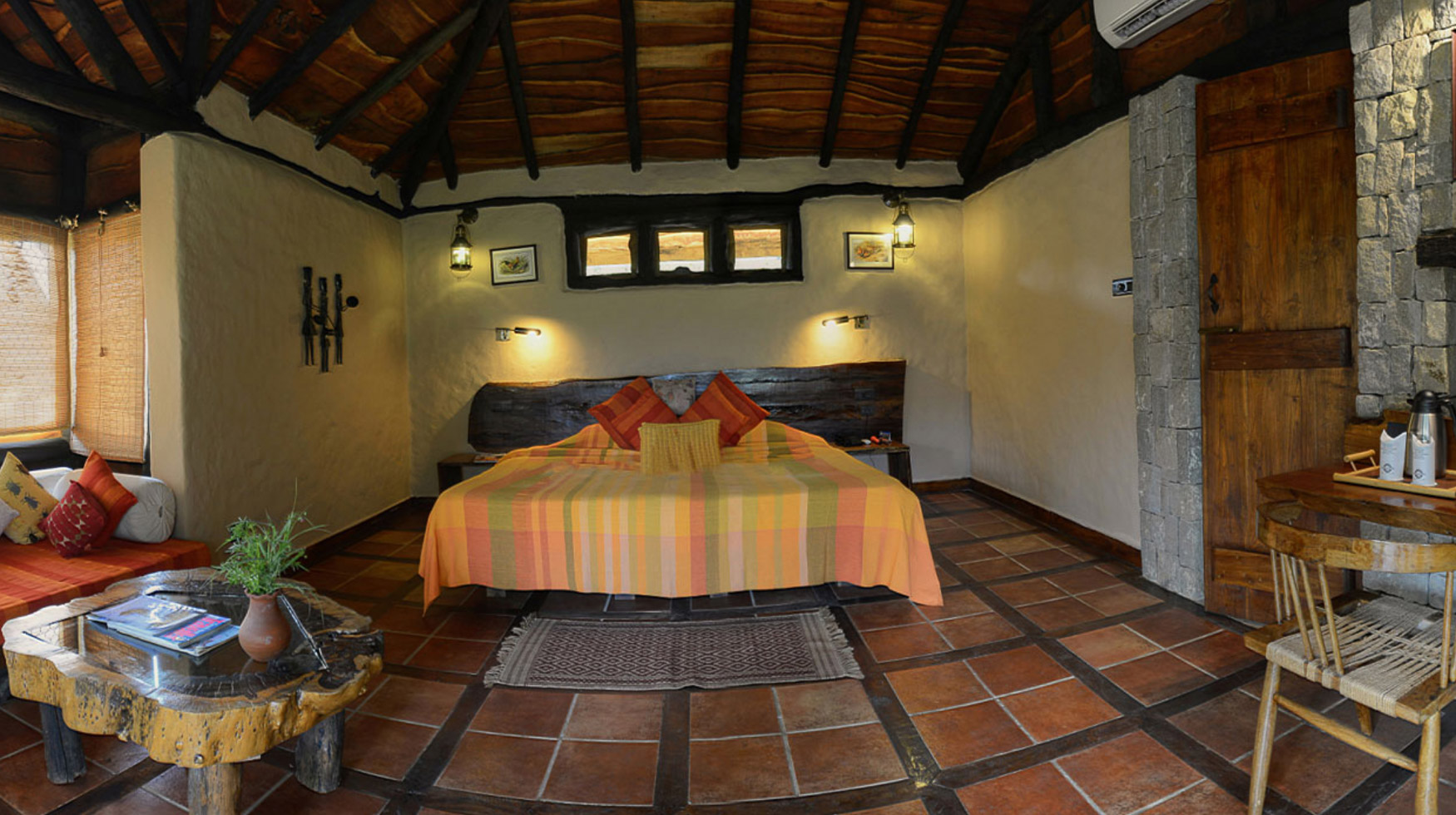
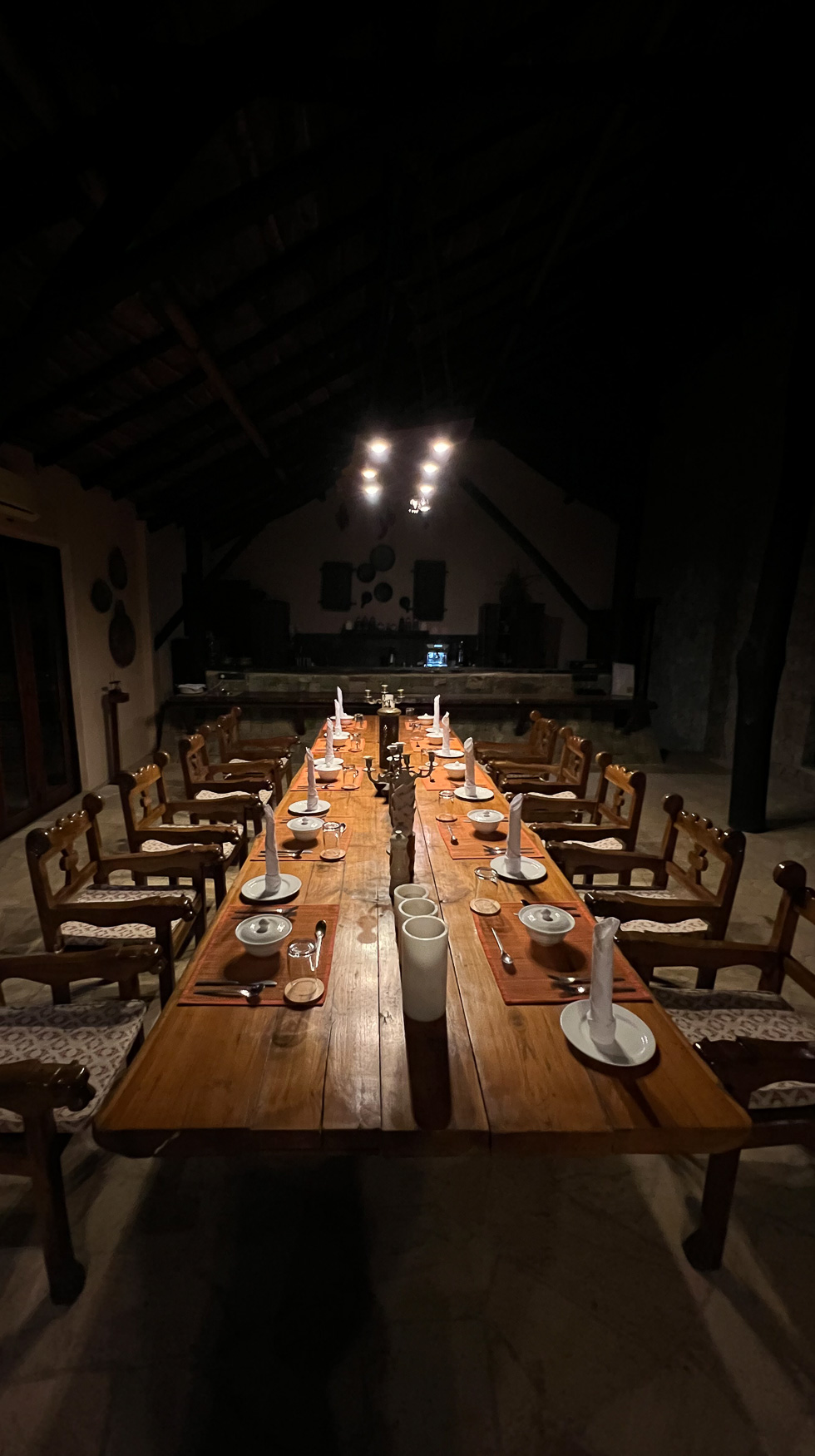
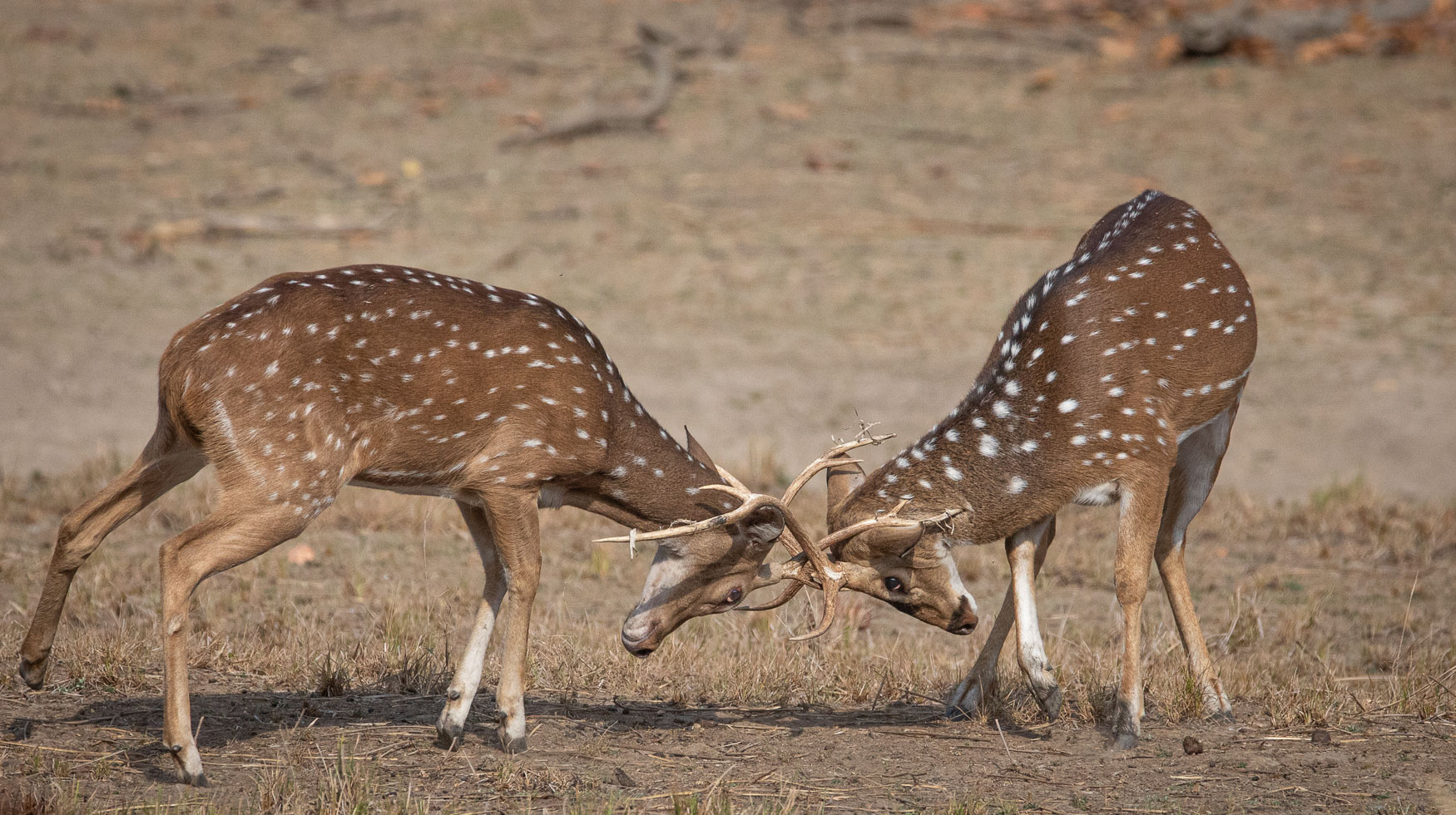
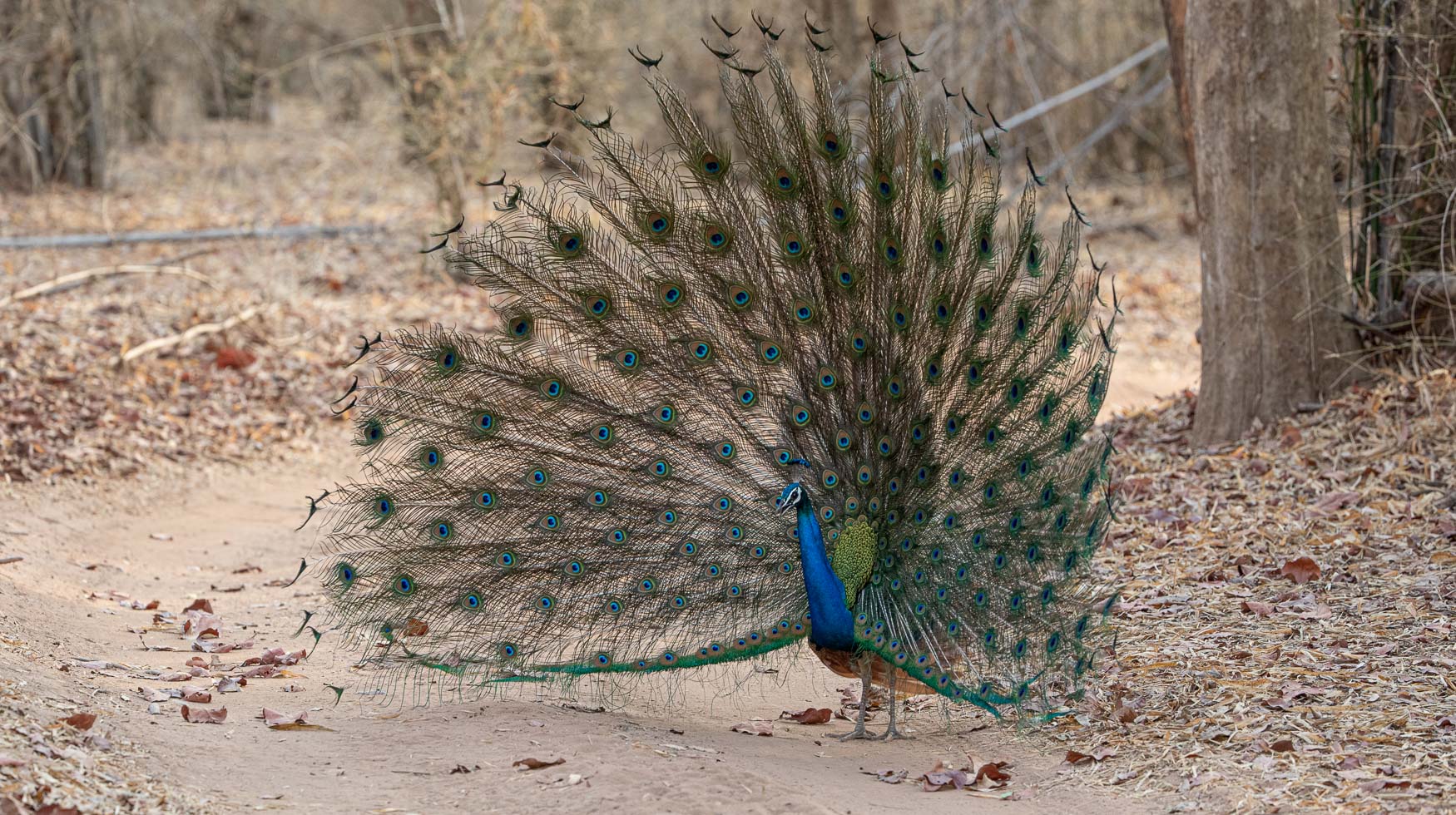
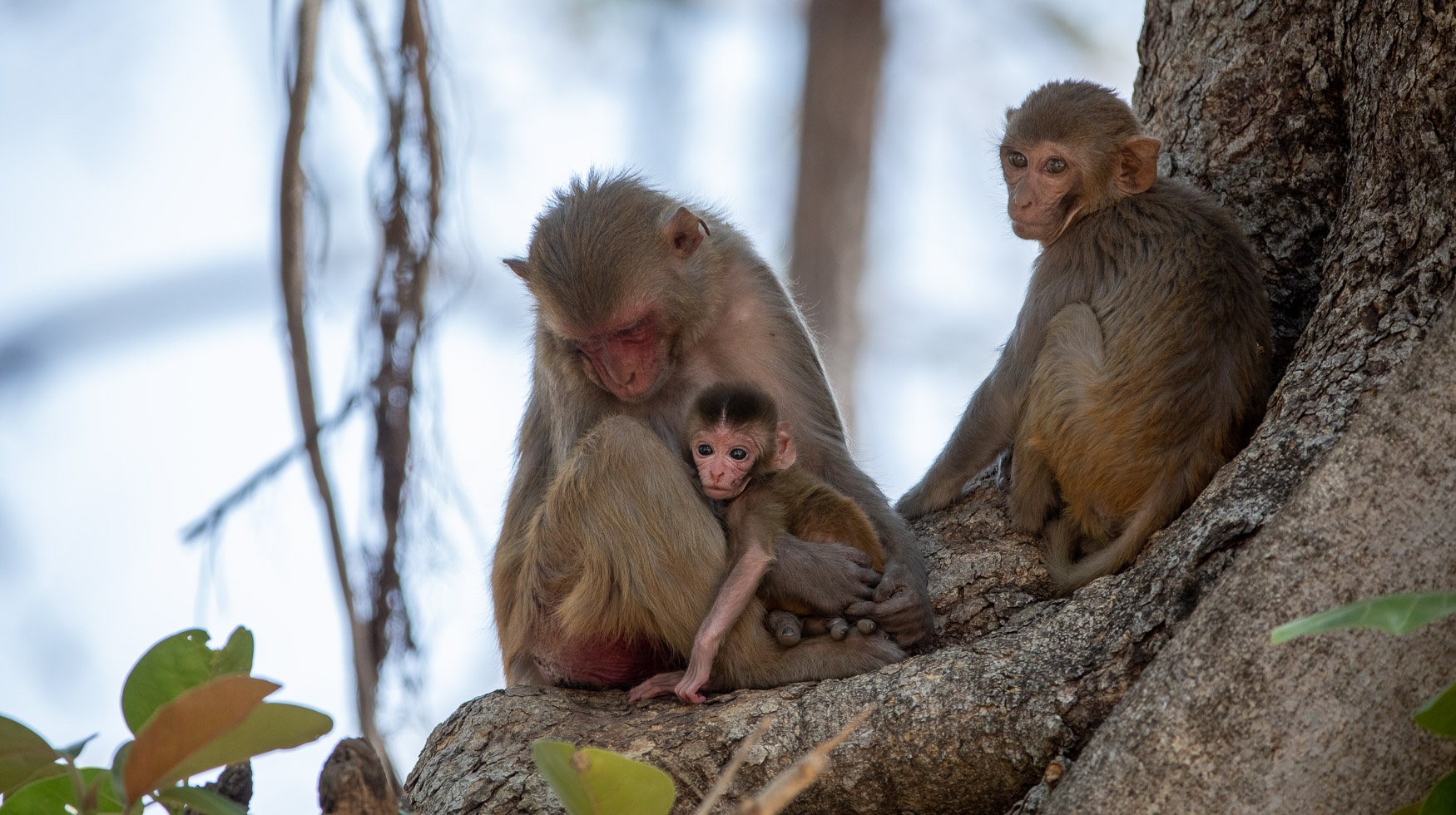
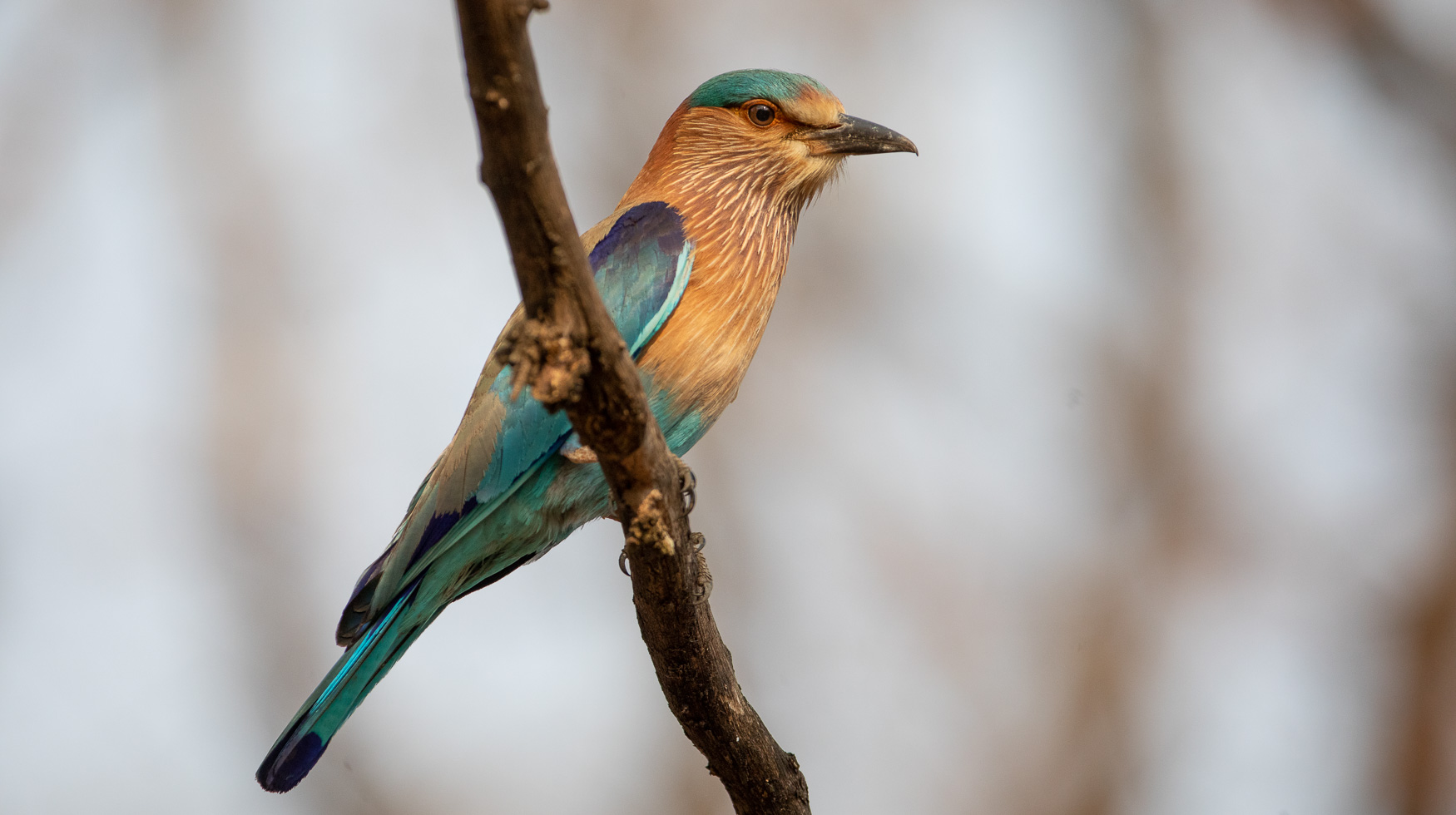
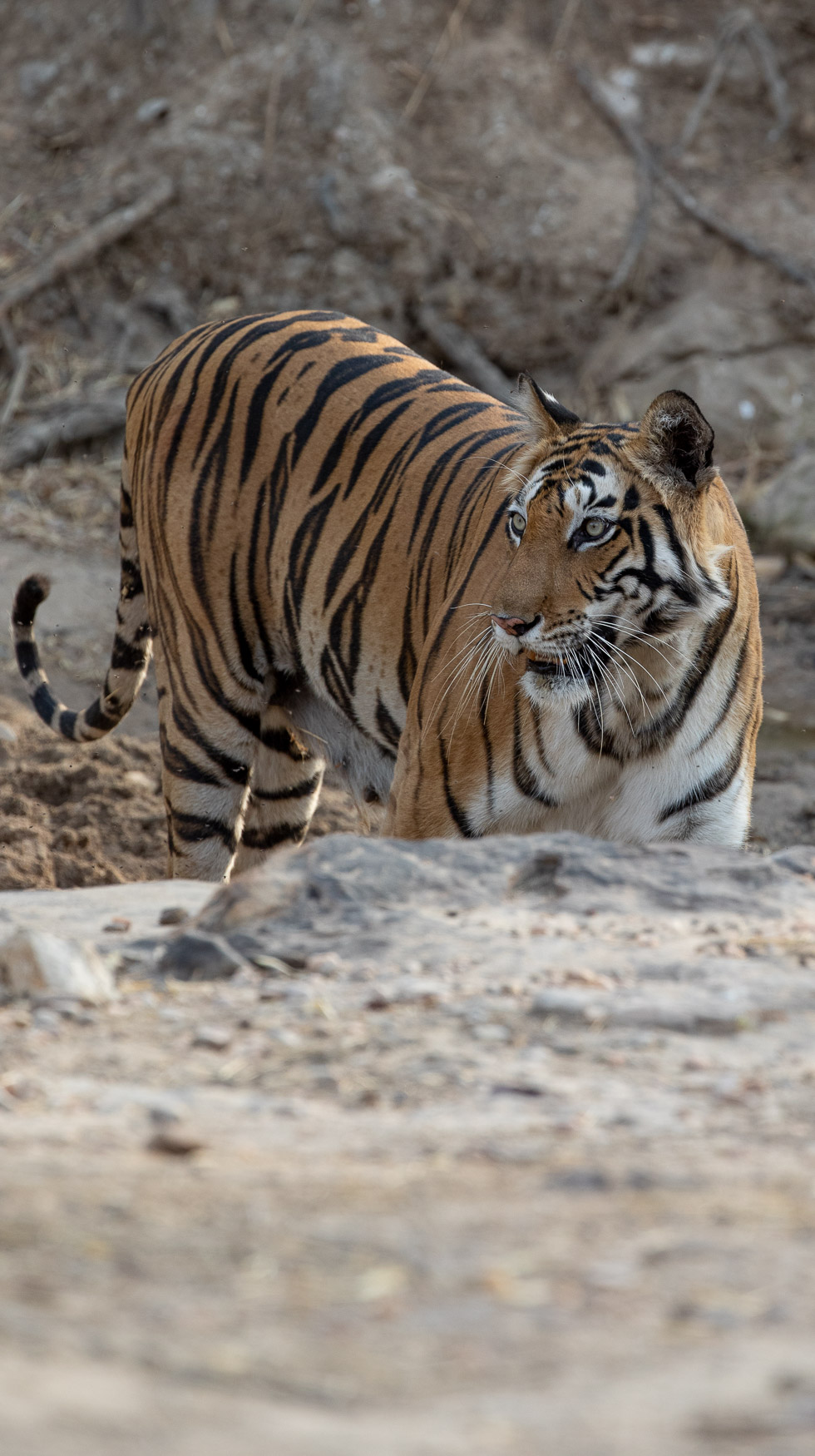
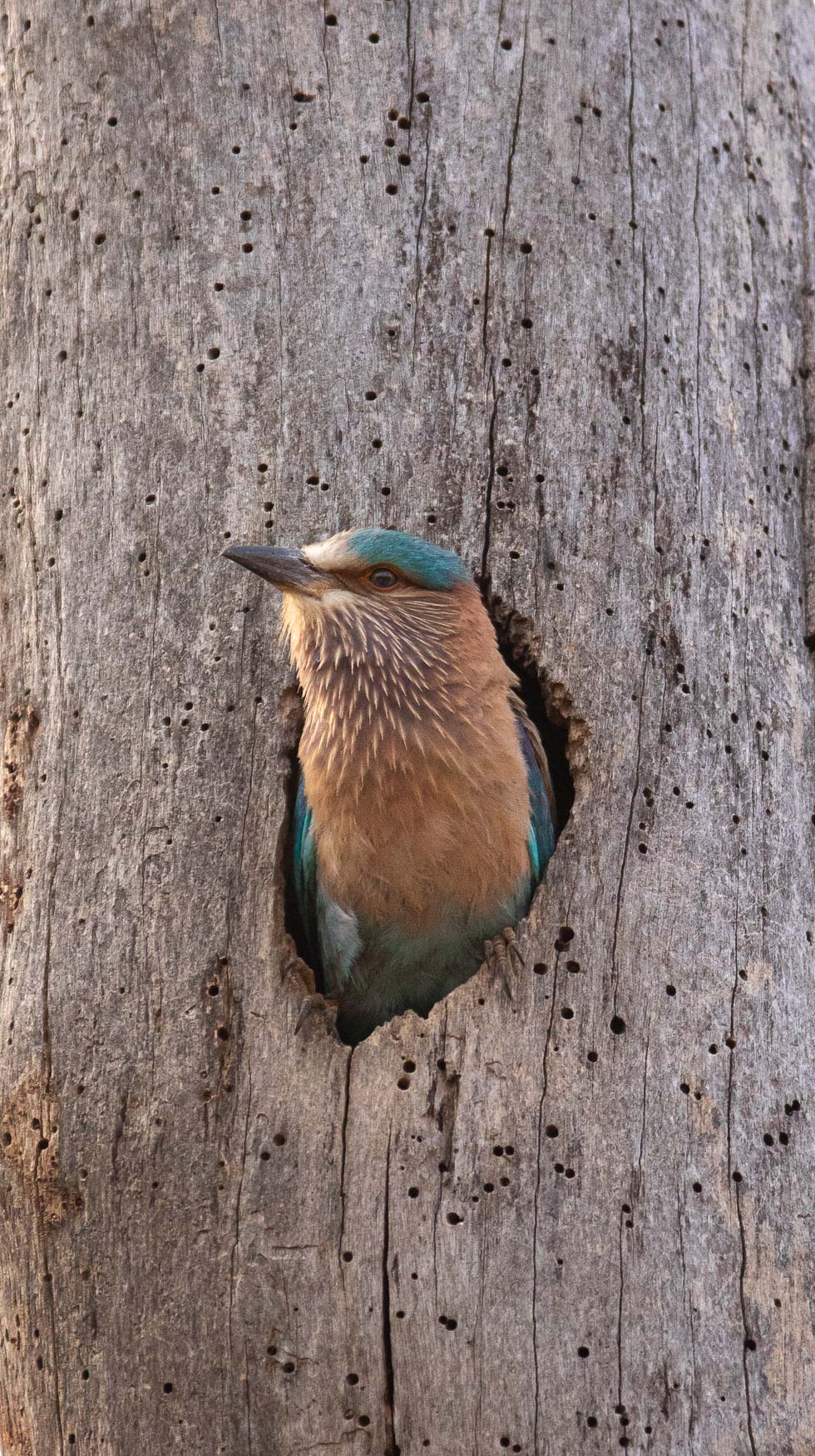
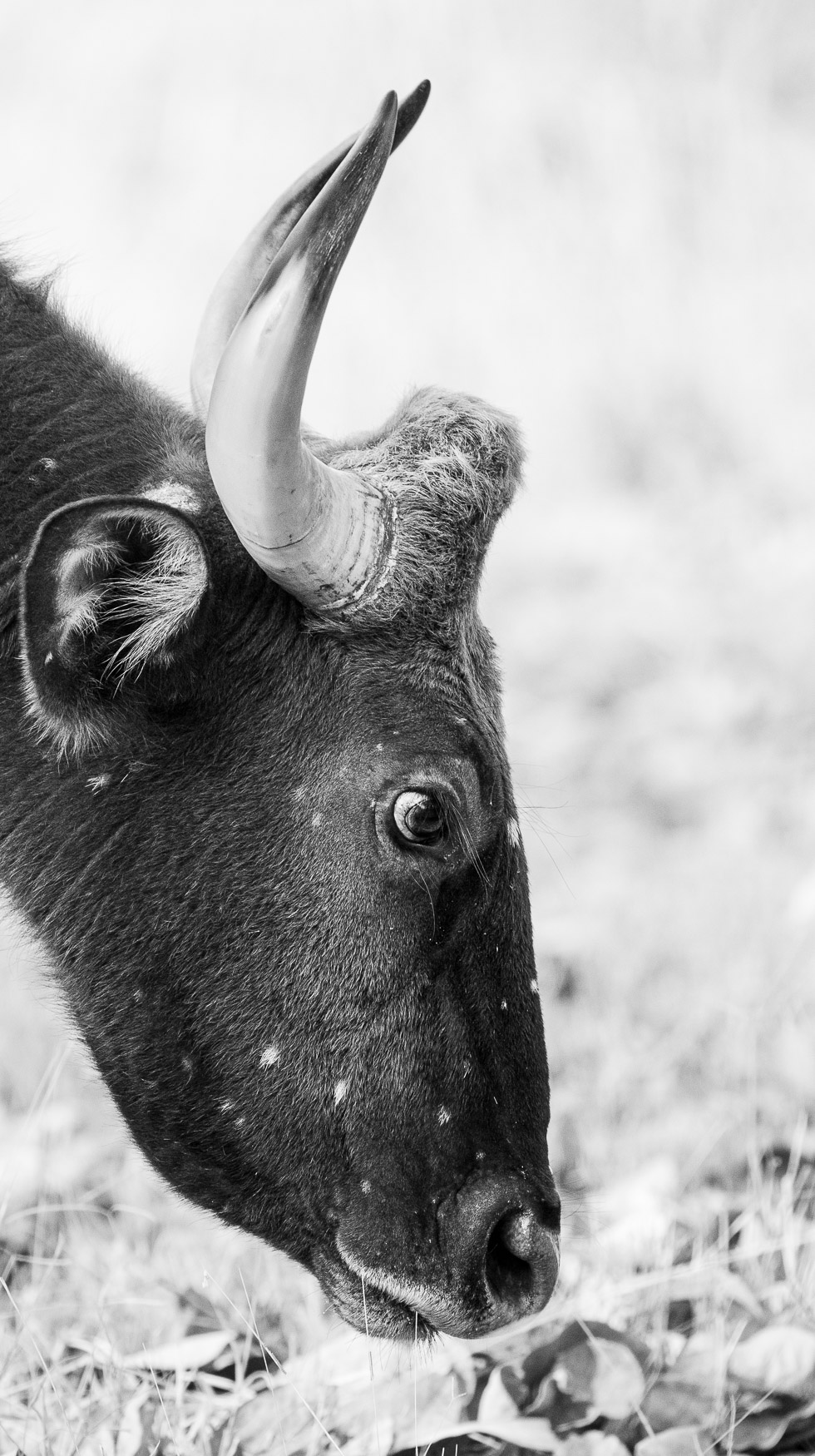
Getting there
After an early breakfast at Pench Tree Lodge, we will transfer by road to Kanha National Park. The drive usually take around 3-4 hours as we leave the drier teak forests of Pench and enter the lush Sal and Bamboo forests of Kanha.
Our last and final stop of this trip was Kings Lodge in Bandhavgarh
The historical links of Bandhavgarh are to be found in India’s worshipped mythological heroes Rama and Laxmana. The name “bandhav-garh” translates to “the brother’s fort” and believed to be gifted by Hindu God Rama to his devoted ‘bandhav’ (brother) Laxmana on his return from victory over Lanka (Ceylon). Inside the park there are 12 natural waterholes, several other historical monuments and remains of ancient caves that exhibit a 2000 year old rich historical past.
There is a reason we end off with Bandhavgarh, out of all four parks we visit, Bandhavgarh has the highest density of tigers. It is the grand finale of the safari and although there is plenty of general game, our main focus was to look and find tigers. What I can tell you is that Bandhavgarh did exactly that! It delivered in every way possible.
Bandhavgarh, with an area of 105 square kilometers was established as a Tiger Reserve in 1968 and has been thriving ever since. Once again, this reserve sits with a similar issue to the other parks, space... Although there is a growing and thriving population of tigers, there is very little space and through common chats at each lodge, there seems to be a plan to relocate some tigers from certain reserves into the reserves where genetic diversity is needed or an increase in population is needed.
Not only is Kings Lodge a beautiful setting, it is also very close to all the gates of the park. What happens in Bandhavgarh and a number of other Tiger Reserves in India is that they have different zones. So you book a specific zone and that the zone you stay in for the drive, the reason behind this is to manage the amount of vehicles in the different zones and to make sure that there is an even distribution amongst visitors.
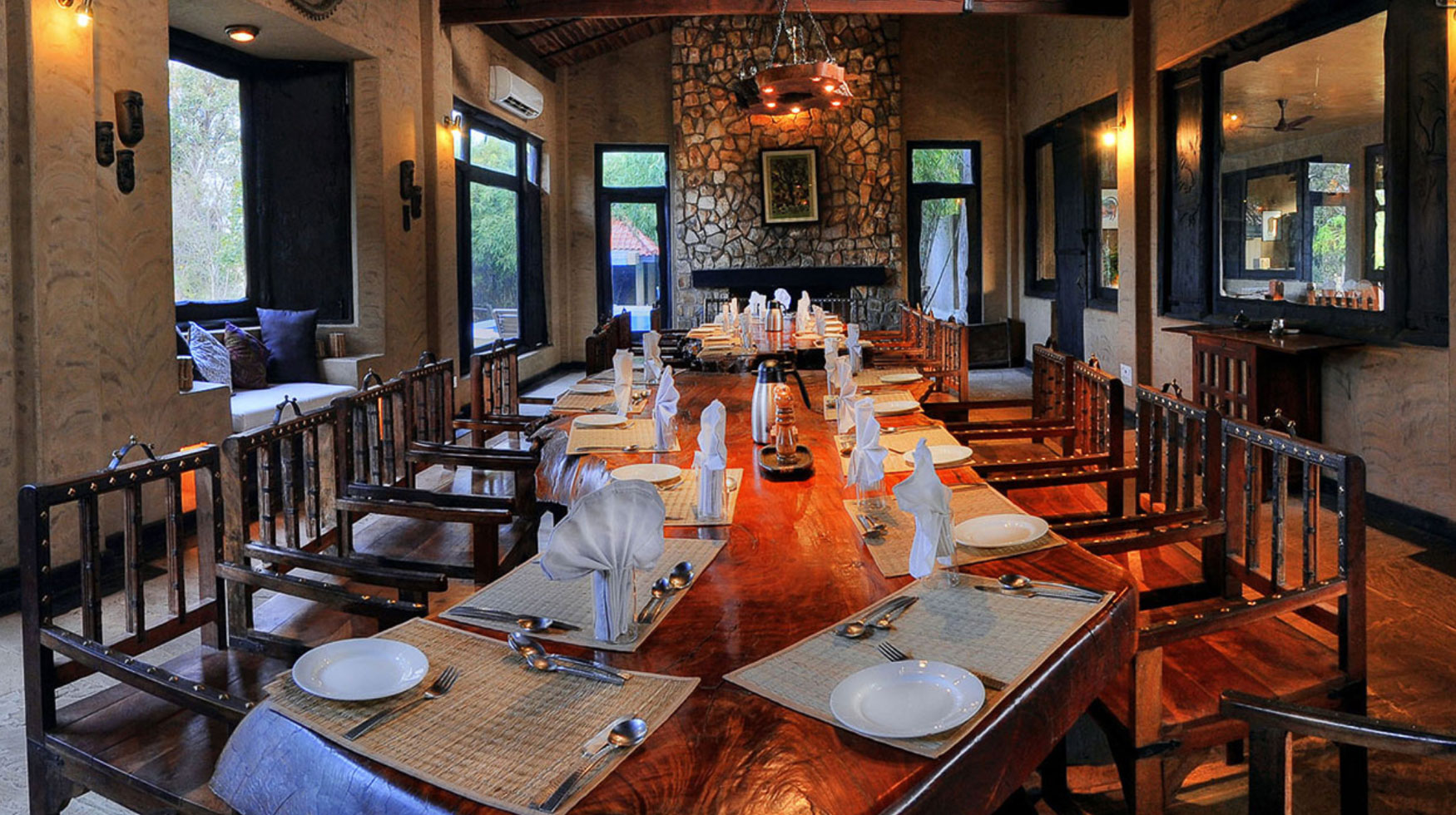
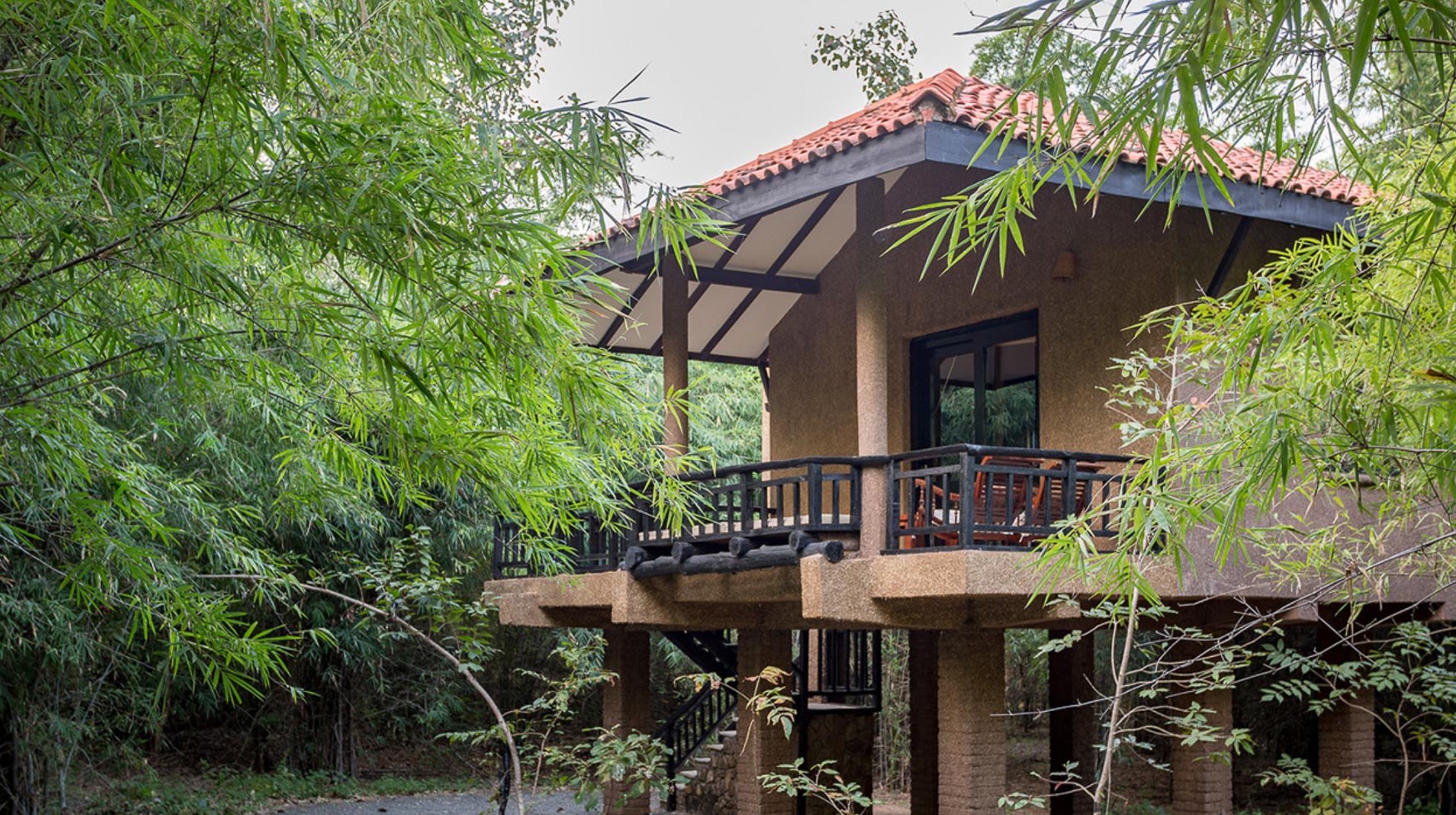
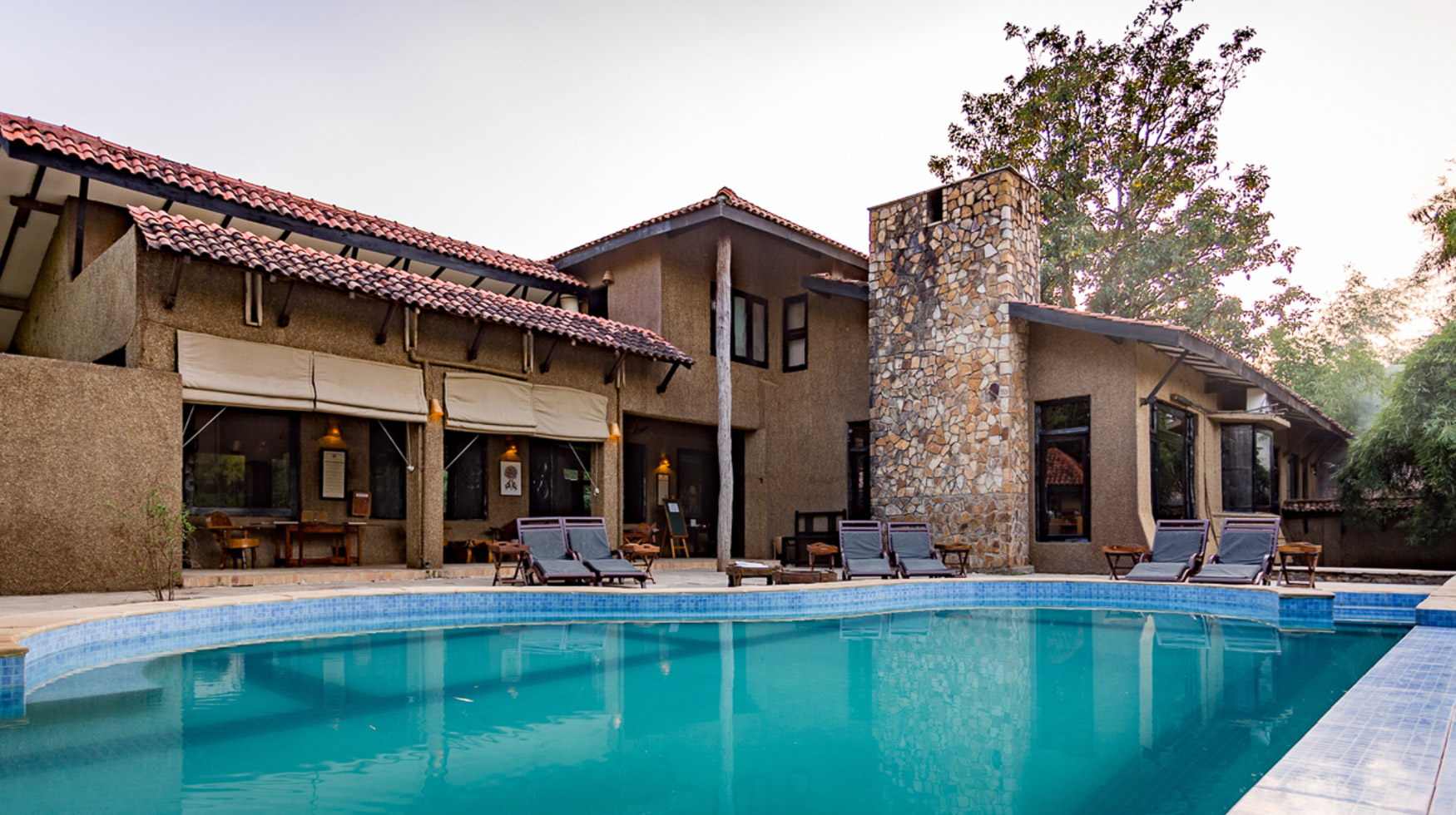
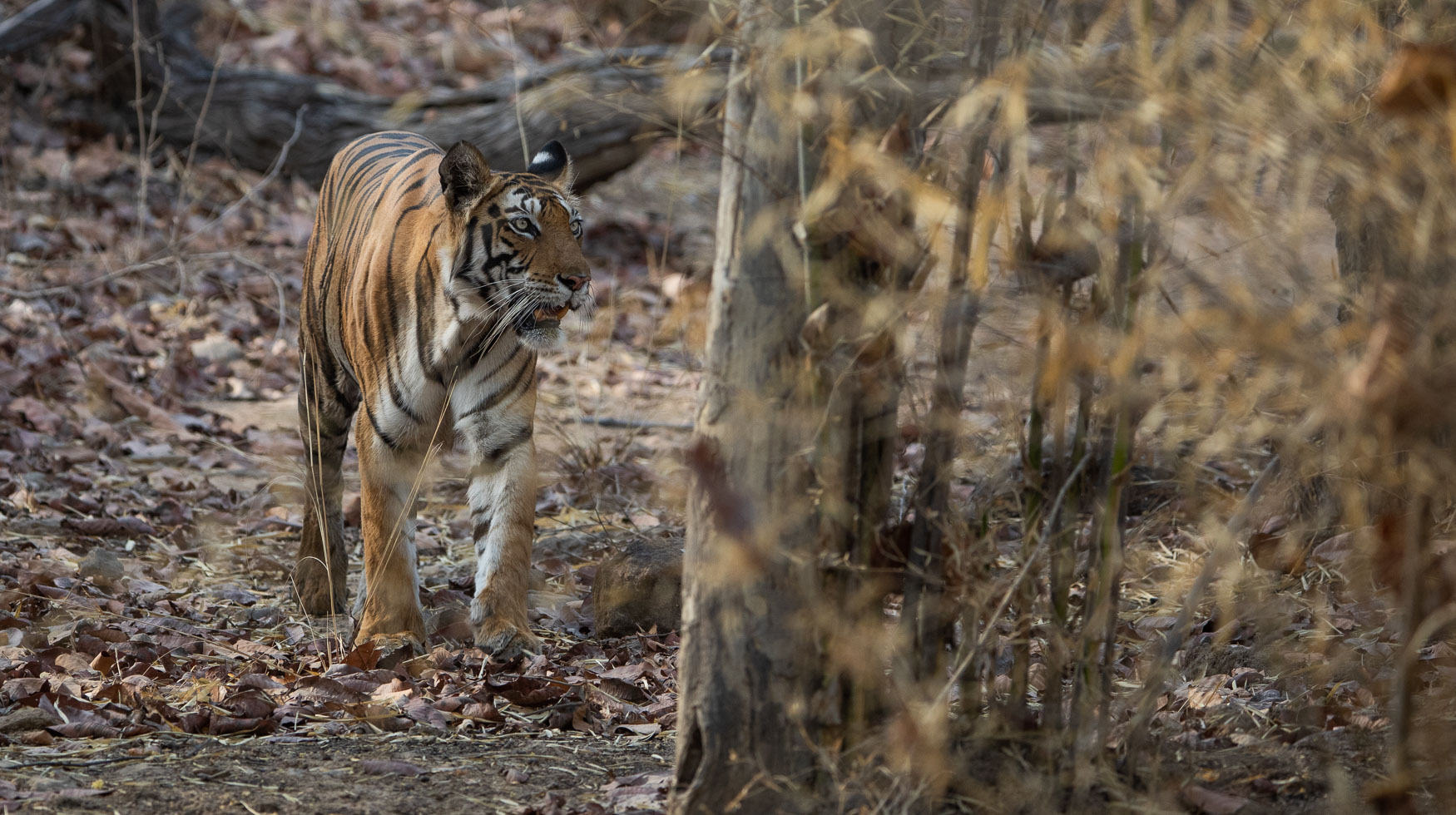
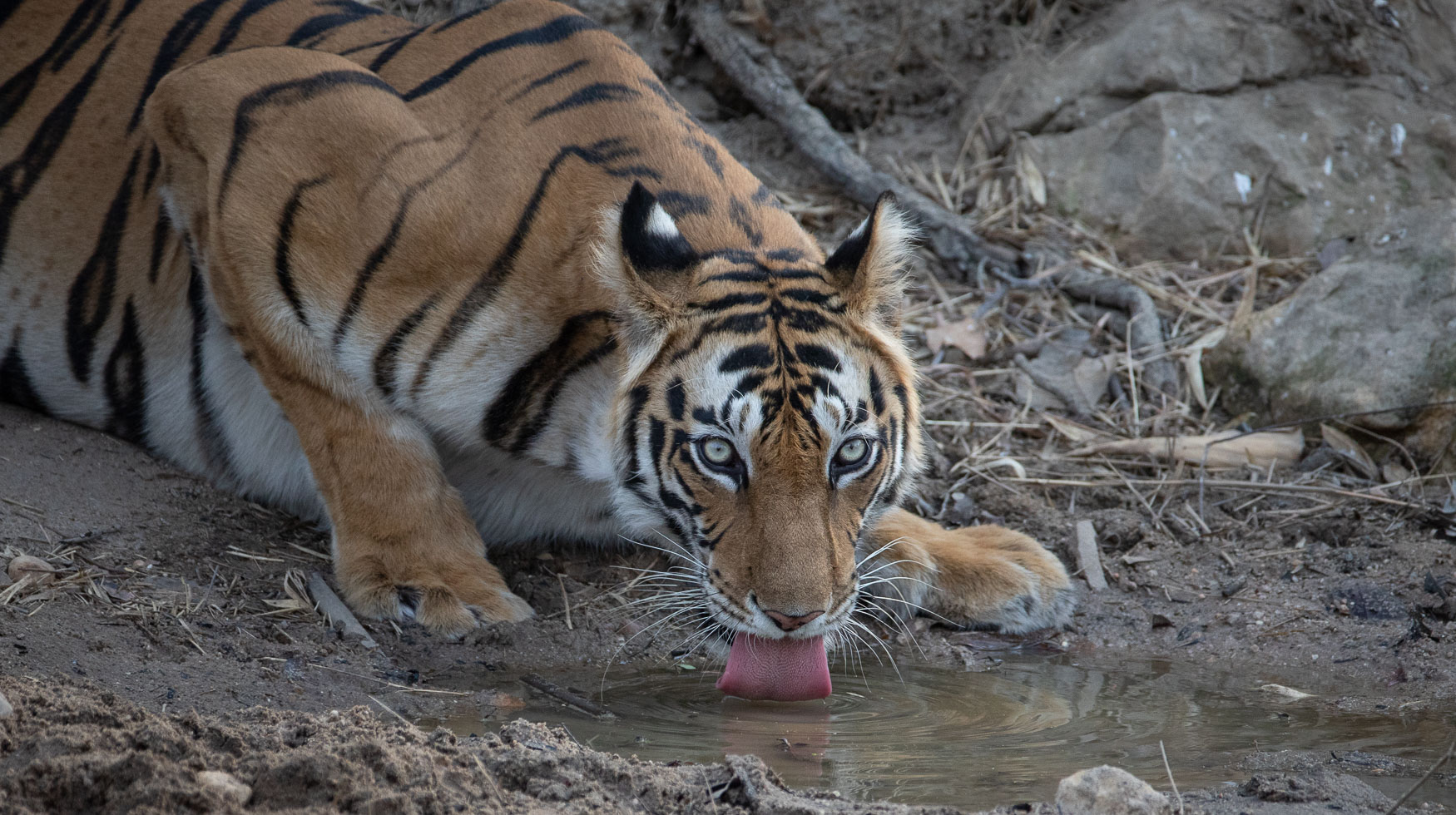
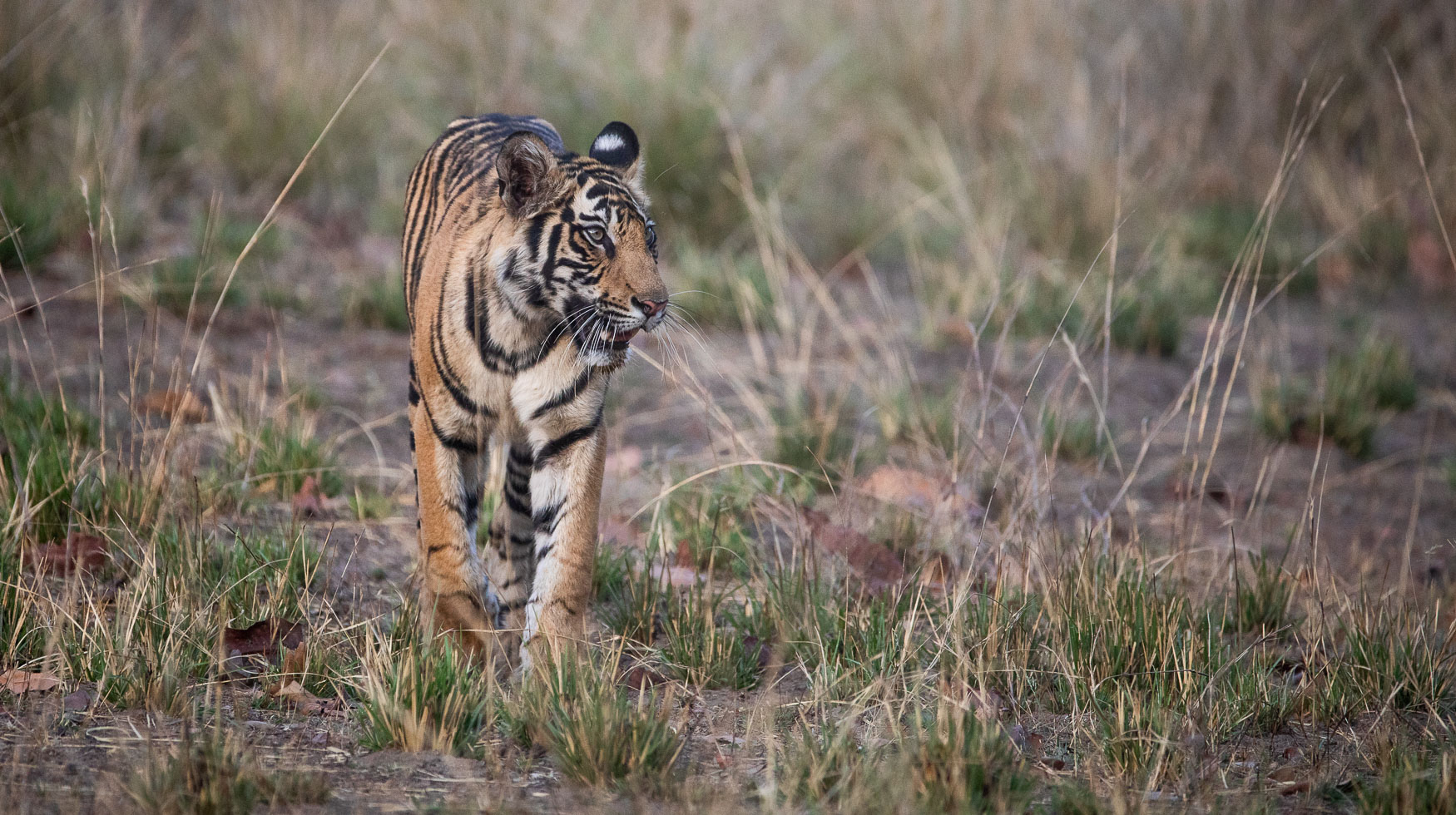
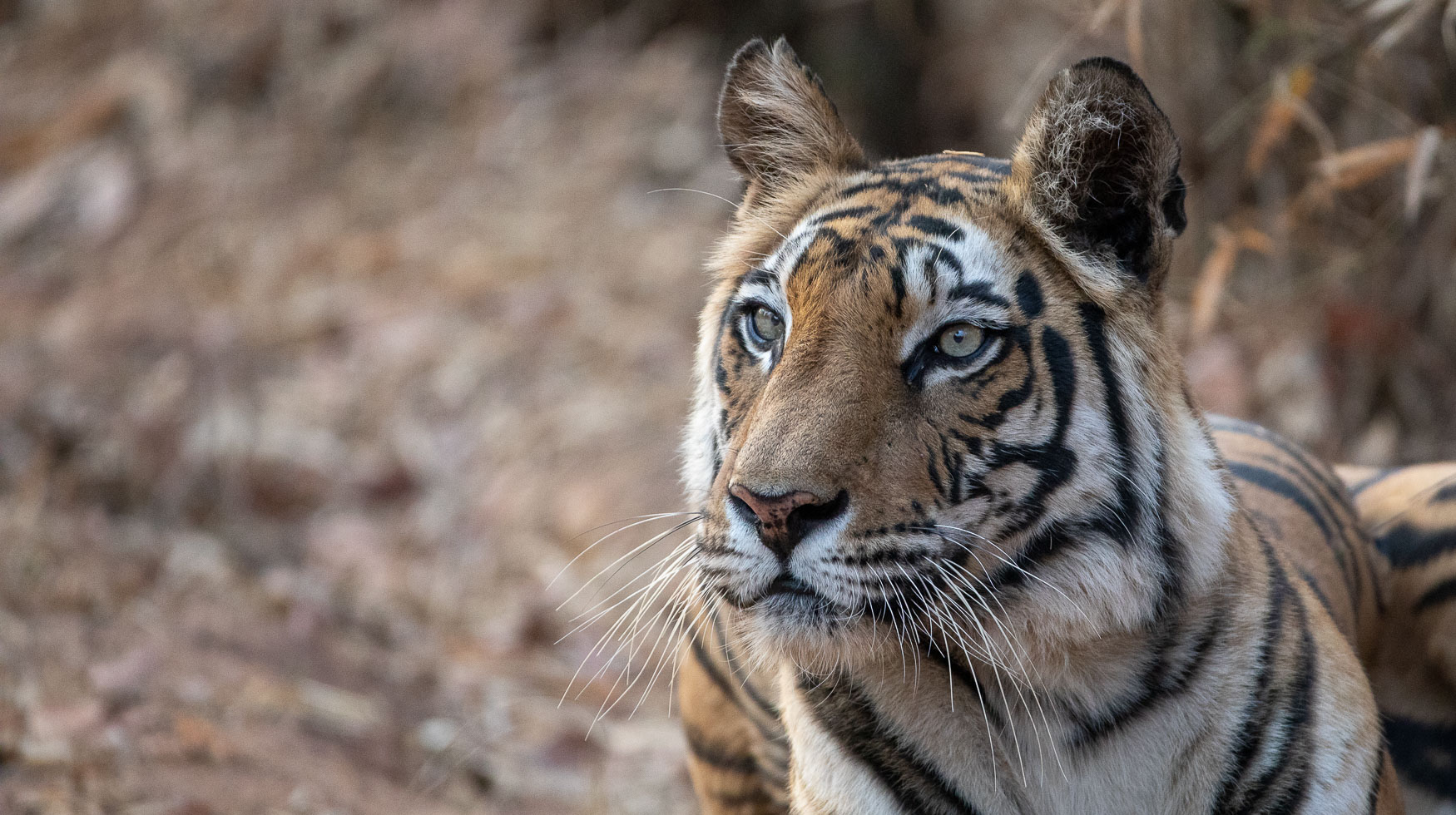
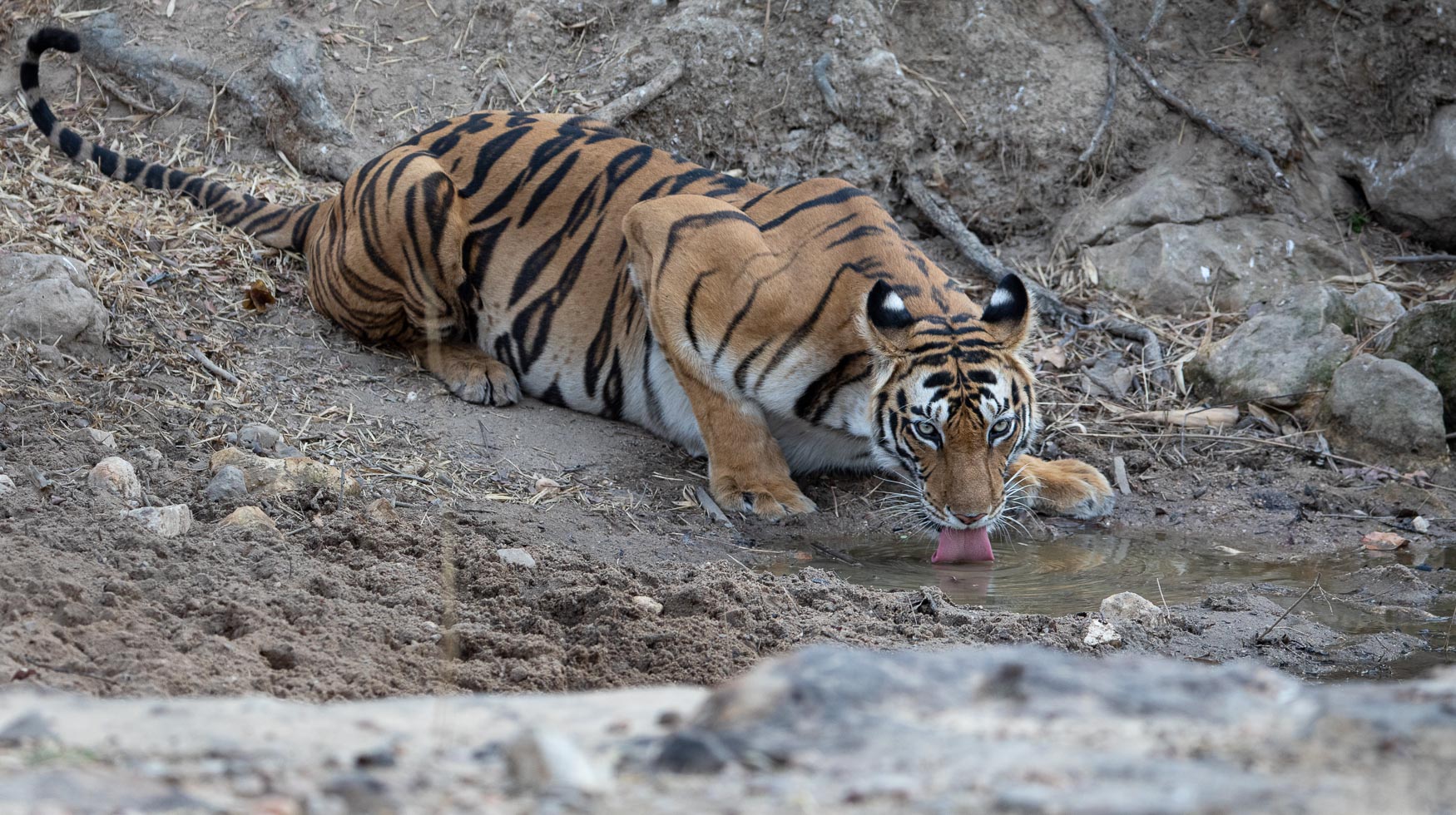
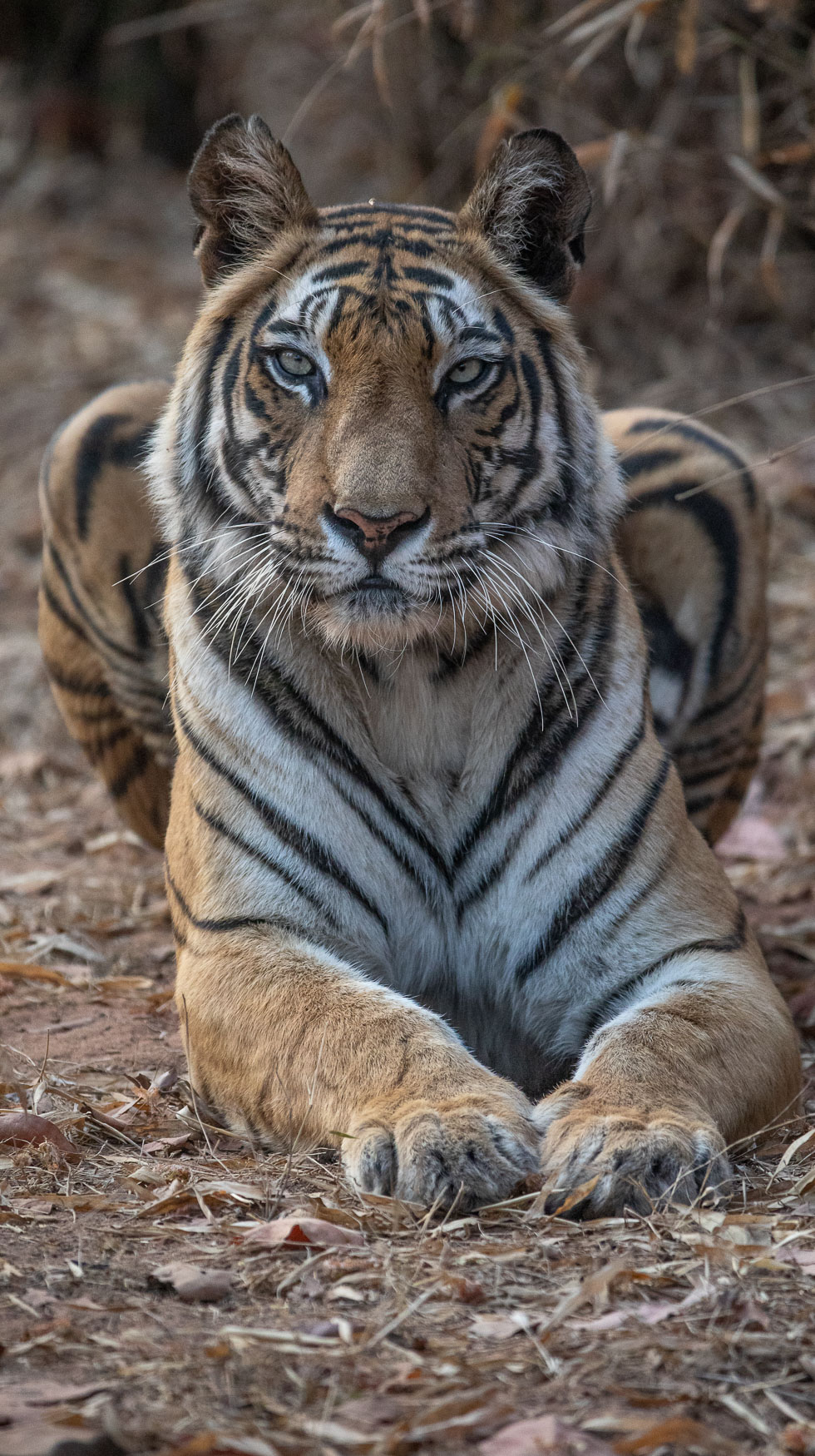
Getting there
We will depart Kanha Earth Lodge after an early breakfast and transfer by road to Bandhavgarh. The drive will take us around 6 hours through some rural areas as well as spectacular forests.
Gear Recommendations:
The majority of the parks do not allow any off roading, and although there is a great road network in most of the parks, it is advisable to carry lenses with a bit more reach. I would recommend lenses with up to 400-600mm reach for close up portraits of tigers, but also a wider lens to capture the beauty of the forests, especially during first light. A lens equivalent to a 24-70mm will work perfectly for this.
So why travel with Wild Eye?
- Experience 4 iconic parks in central India, during the best game viewing time of the year.
- The opportunity to view and photograph a tiger in the wild.
- A small intimate group of travelers, limited to 6 guests, with the assistance of 2 Wild Eye guides.
- Travel to some of the less crowded parks in India
- The opportunity to also travel to other parts of India to enjoy the cultural experience, either before or after the scheduled tour.
I cannot wait to return to this incredible country and these four beautiful camps.
Until next time,
Trevor
Incredible India Safari
In central India lies 4 safari regions known for producing some of the best tiger sightings in India. In addition to this the wealth of wildlife that occur there such as leopard, sloth bear & wild dogs will fulfil all your needs and the diverse & scenic landscapes steeped in beauty & history will provide a fantastic backdrop to it all. Bandhavgarh, Pench, Tadoba and Kanha National Parks are all located in close proximity to one another. They offer a diverse & exciting safari experience.
